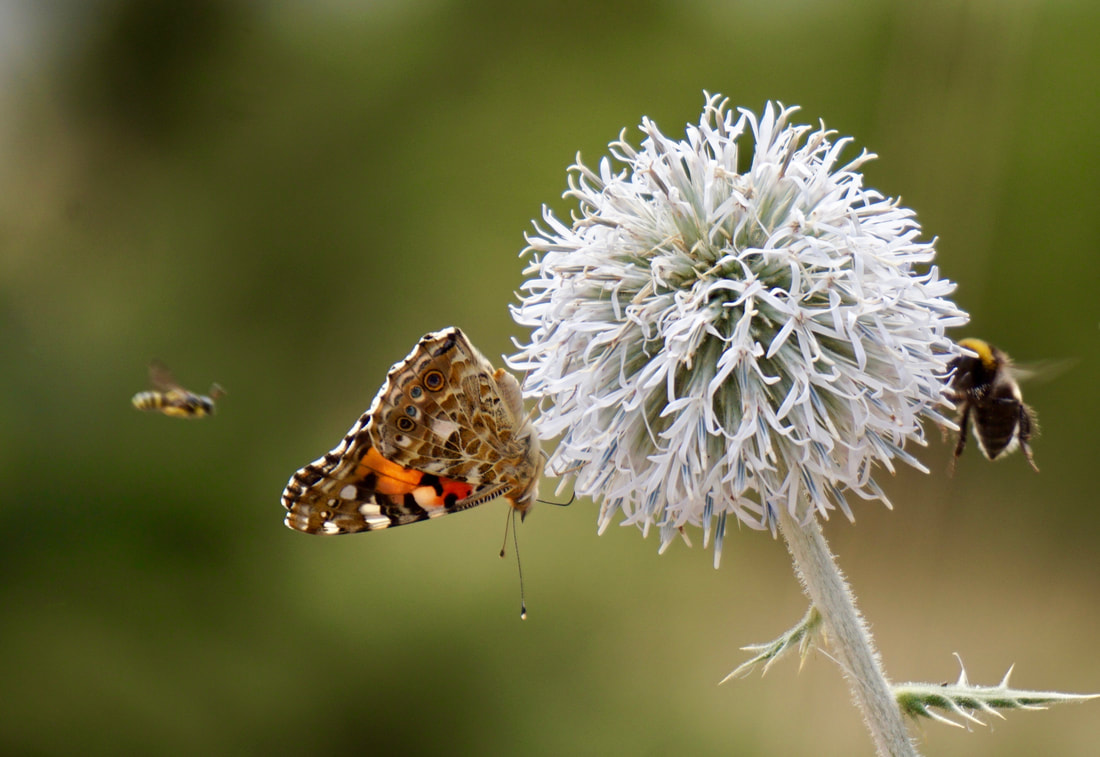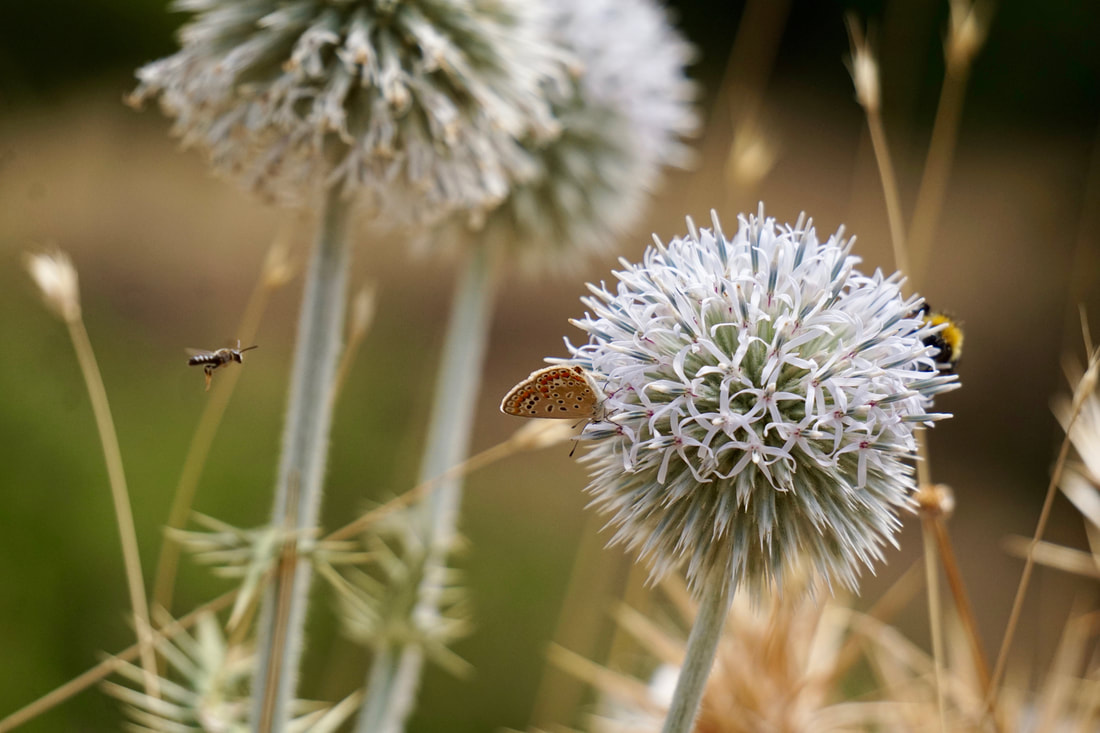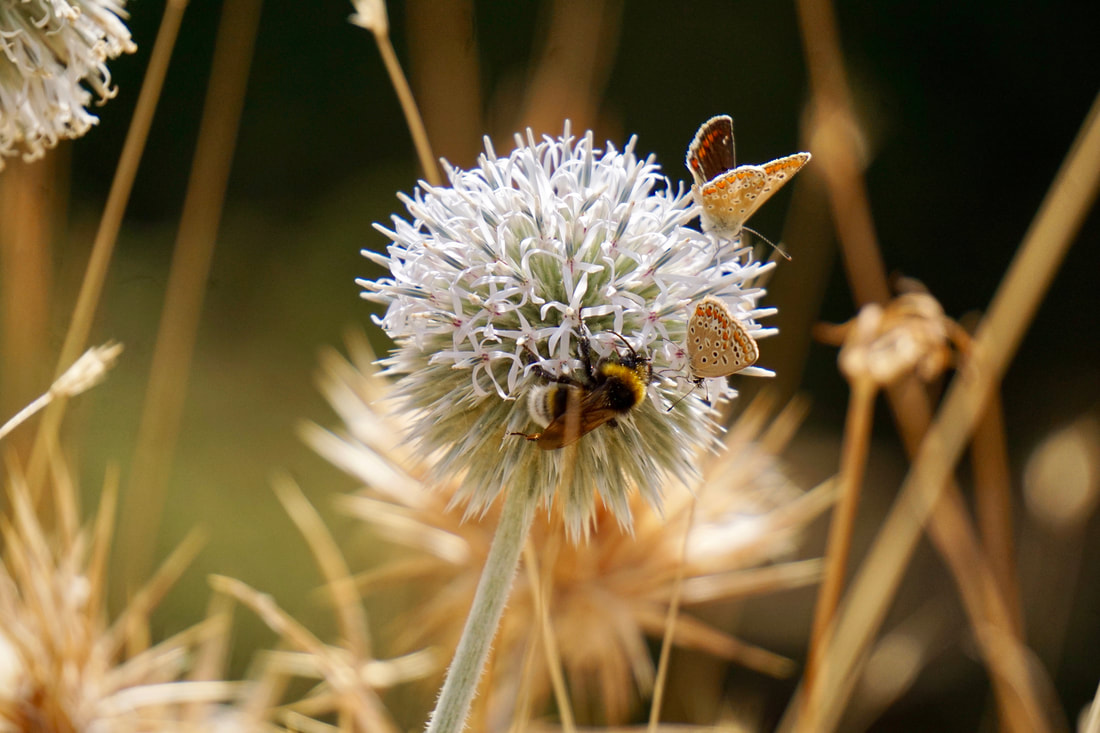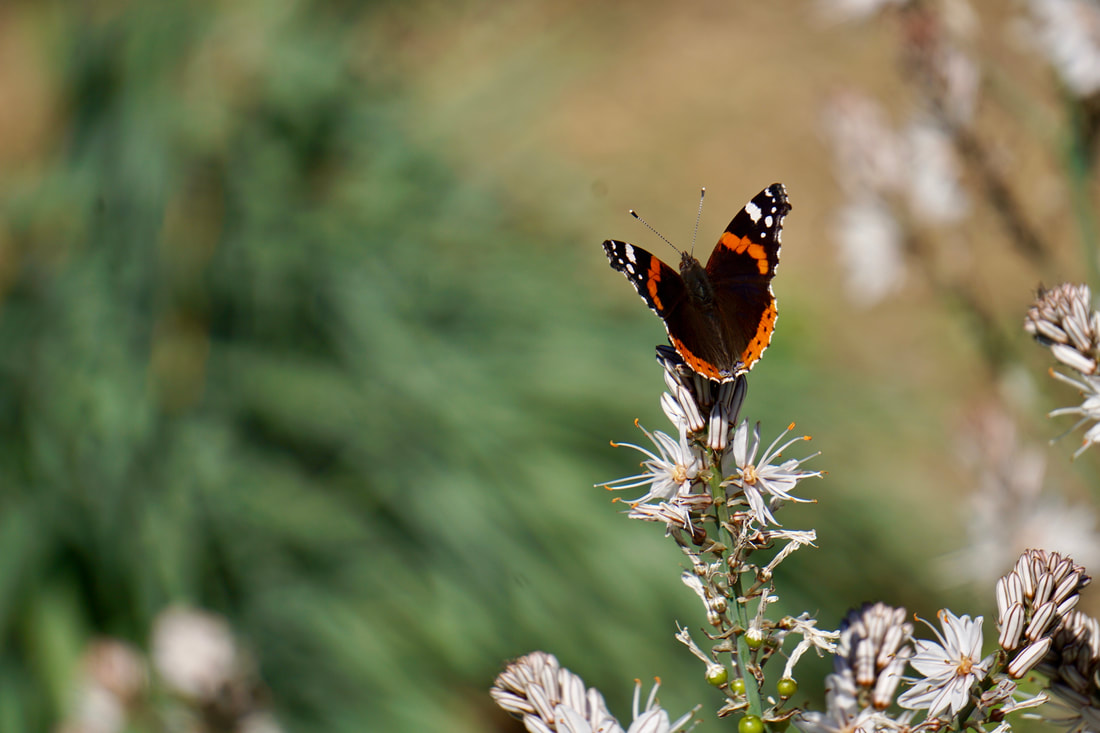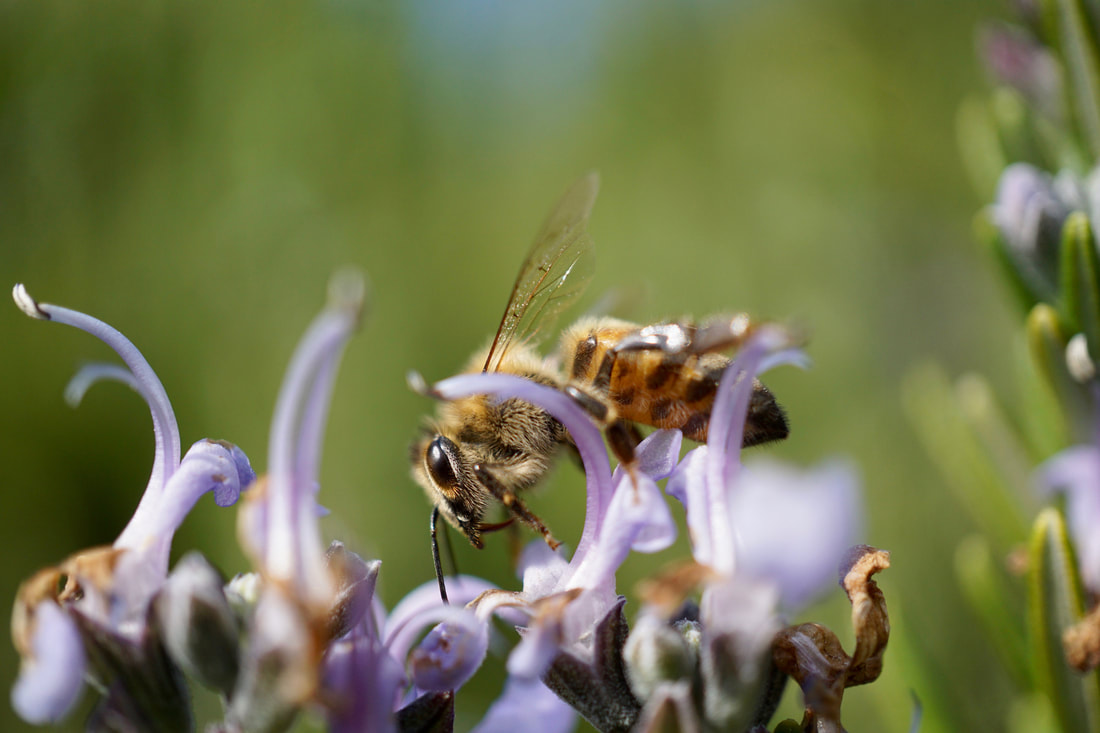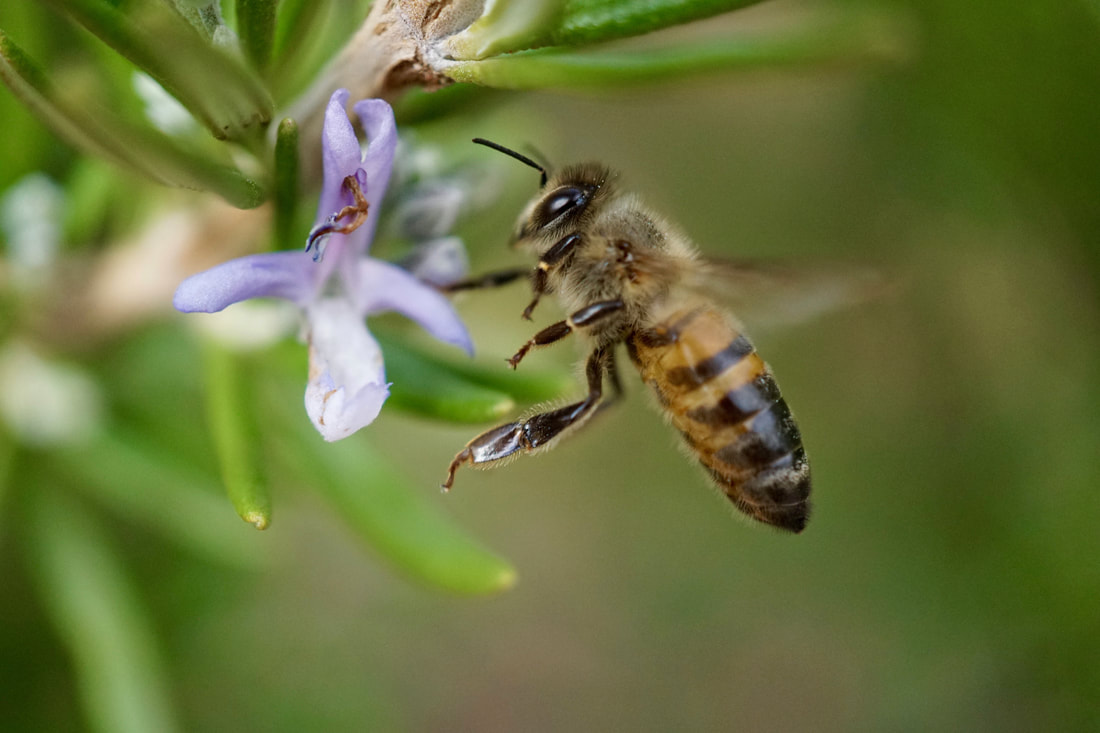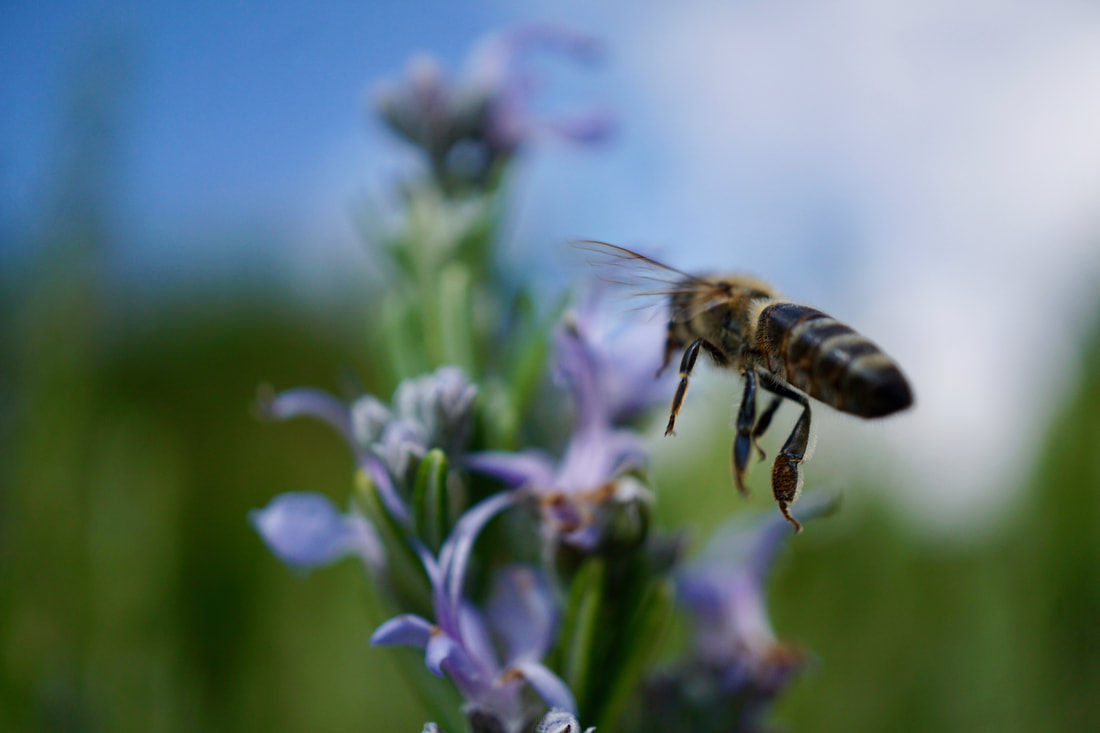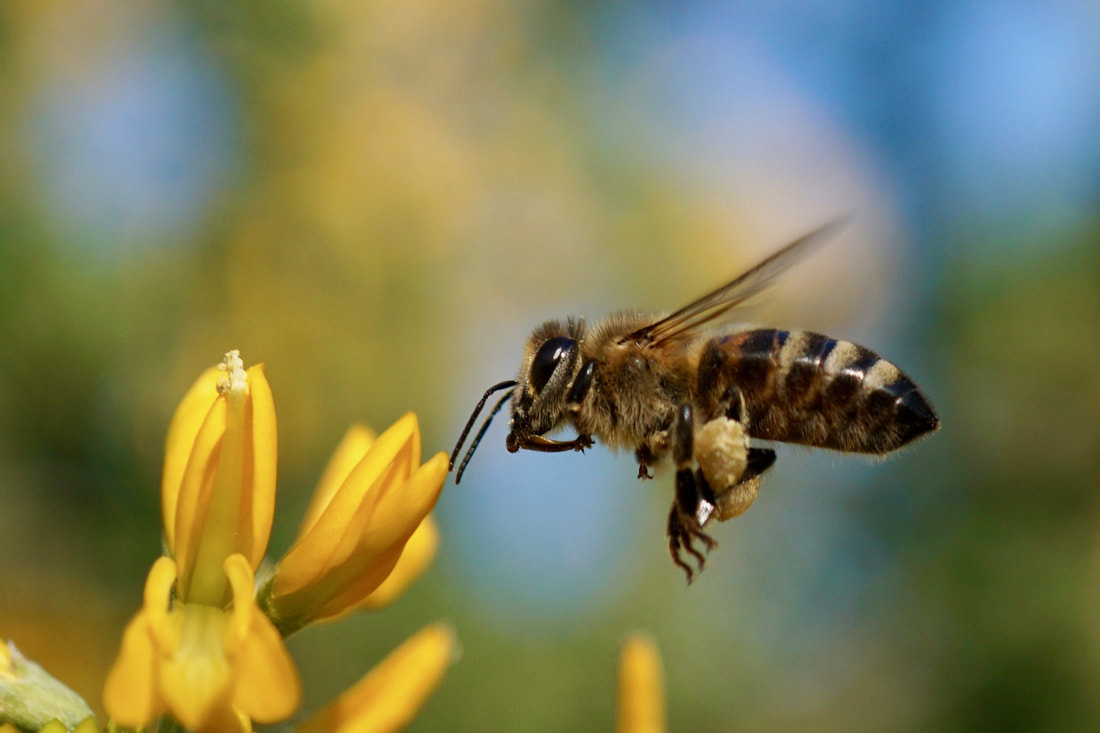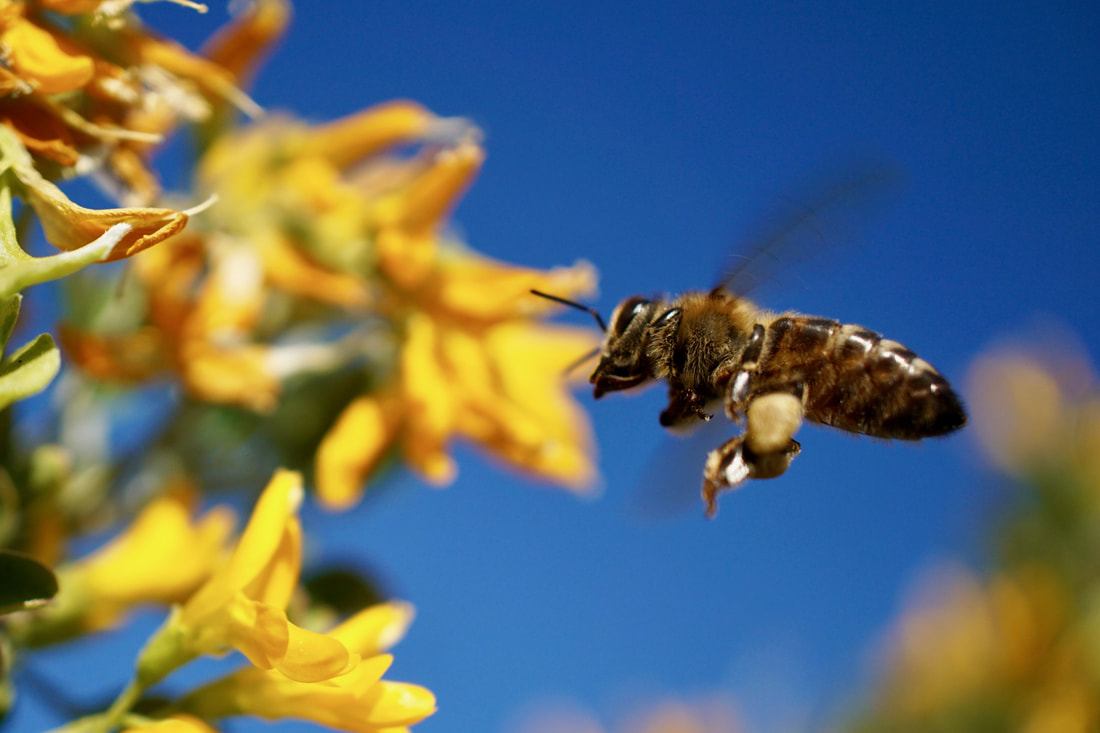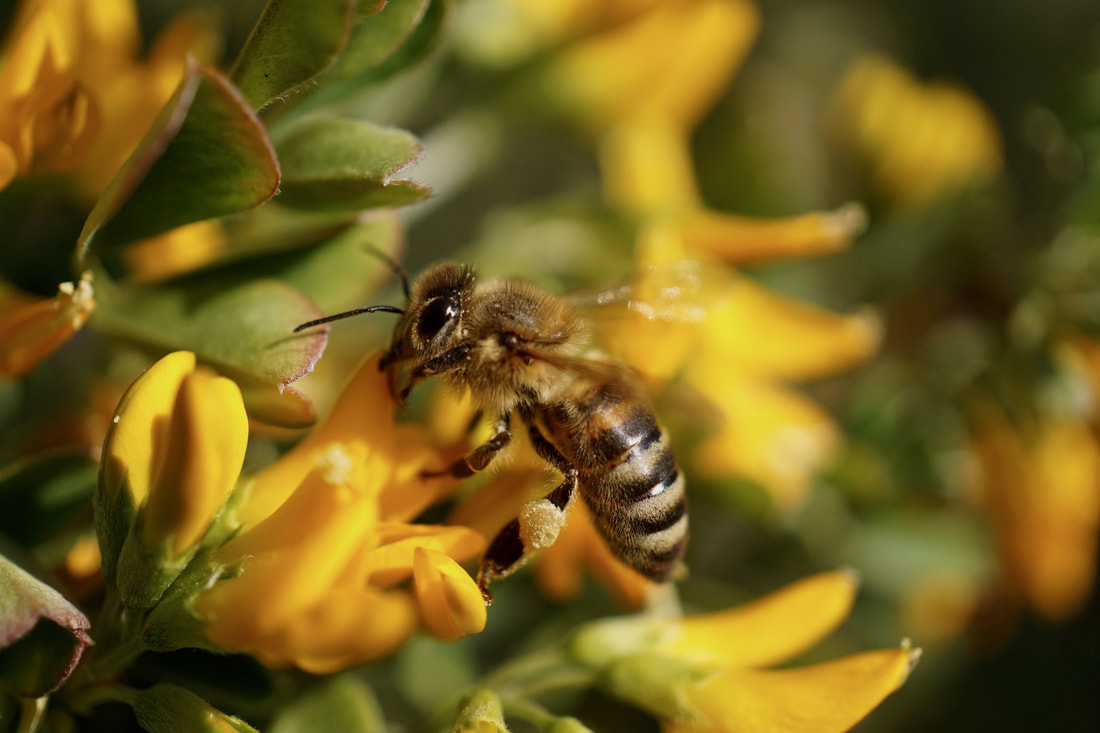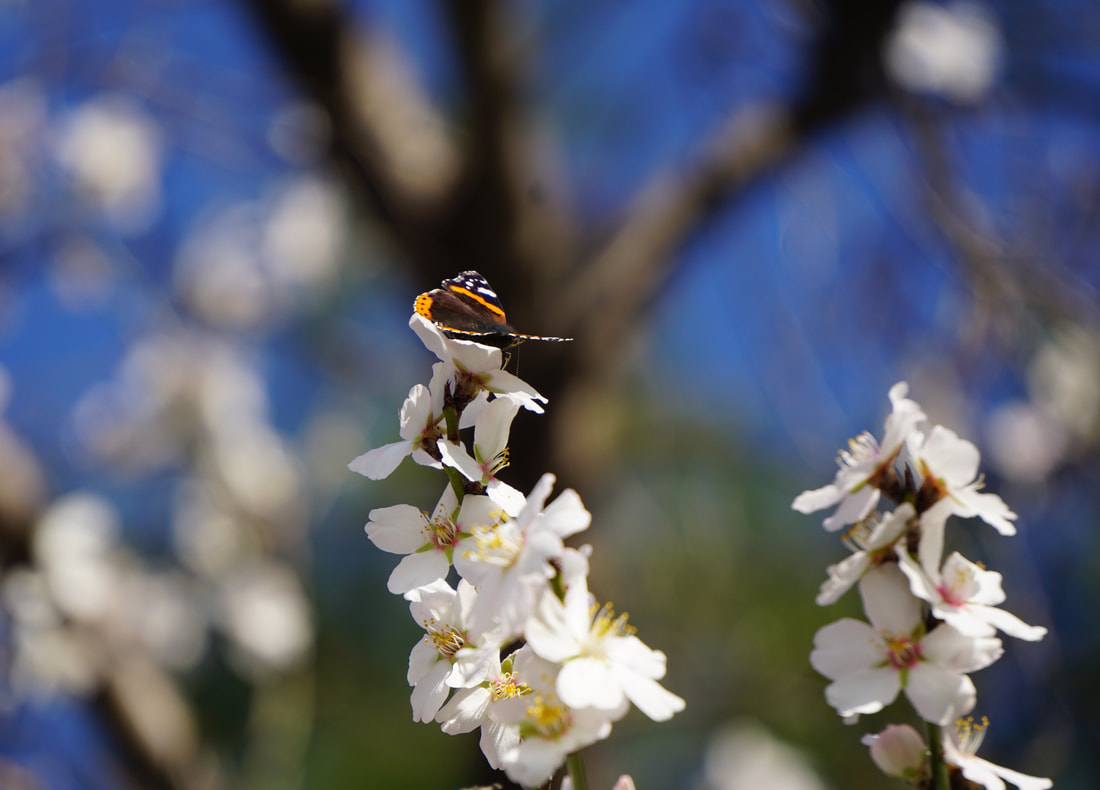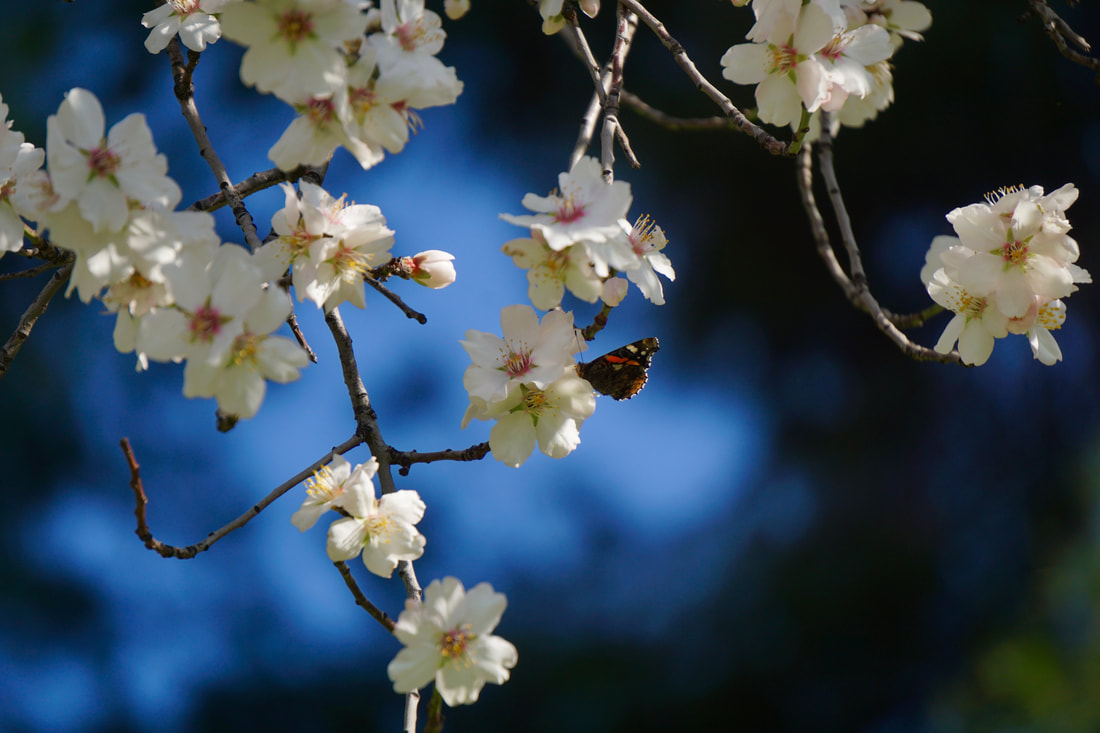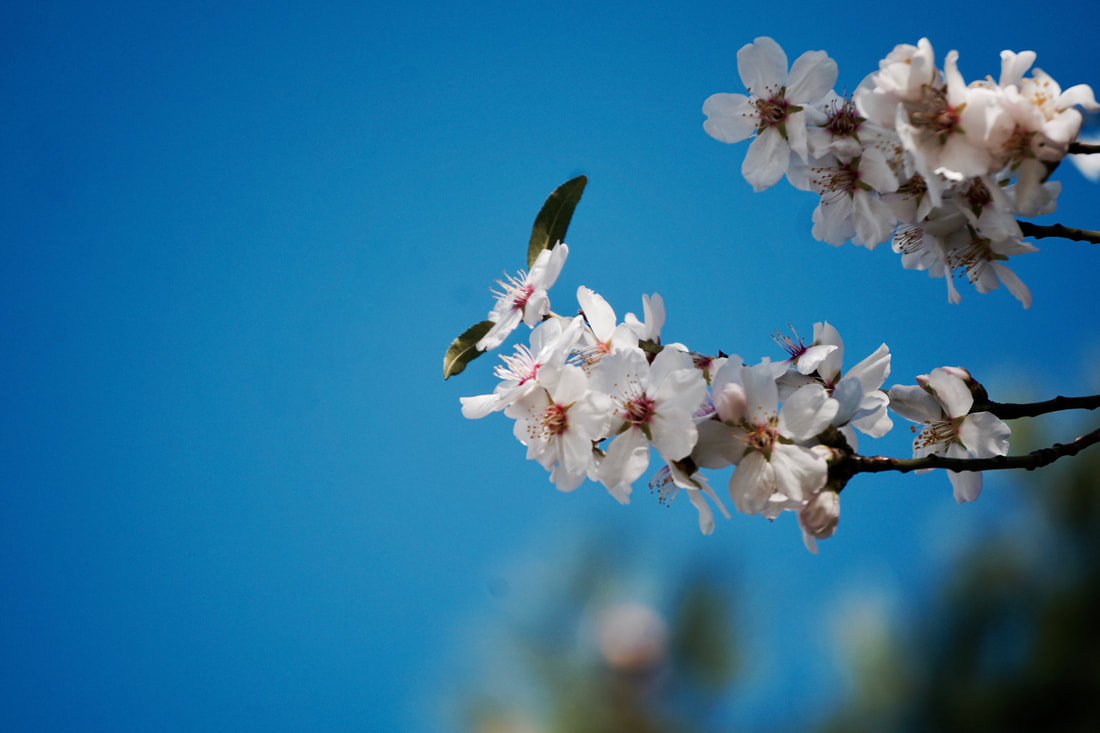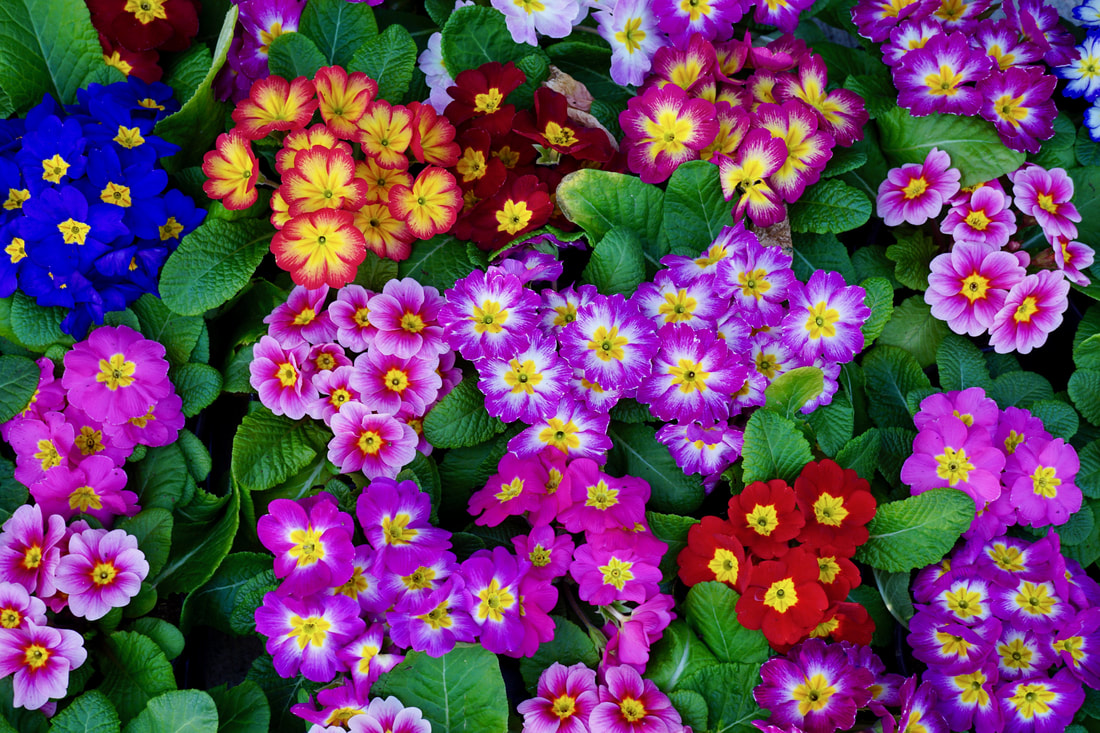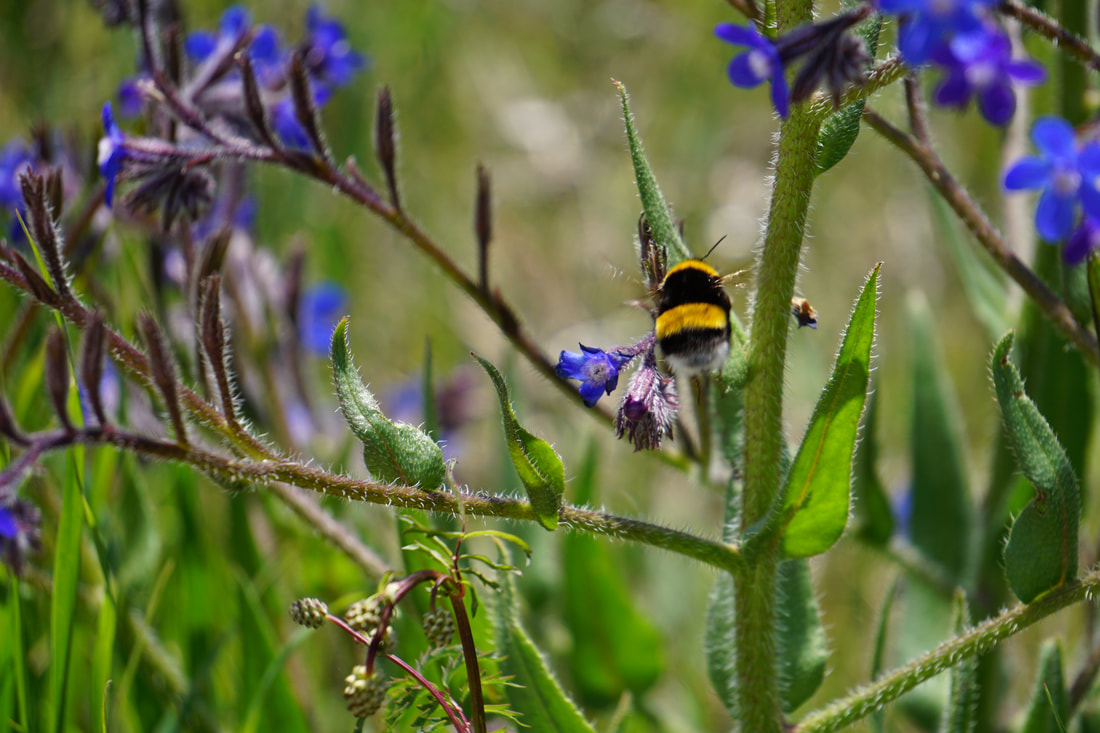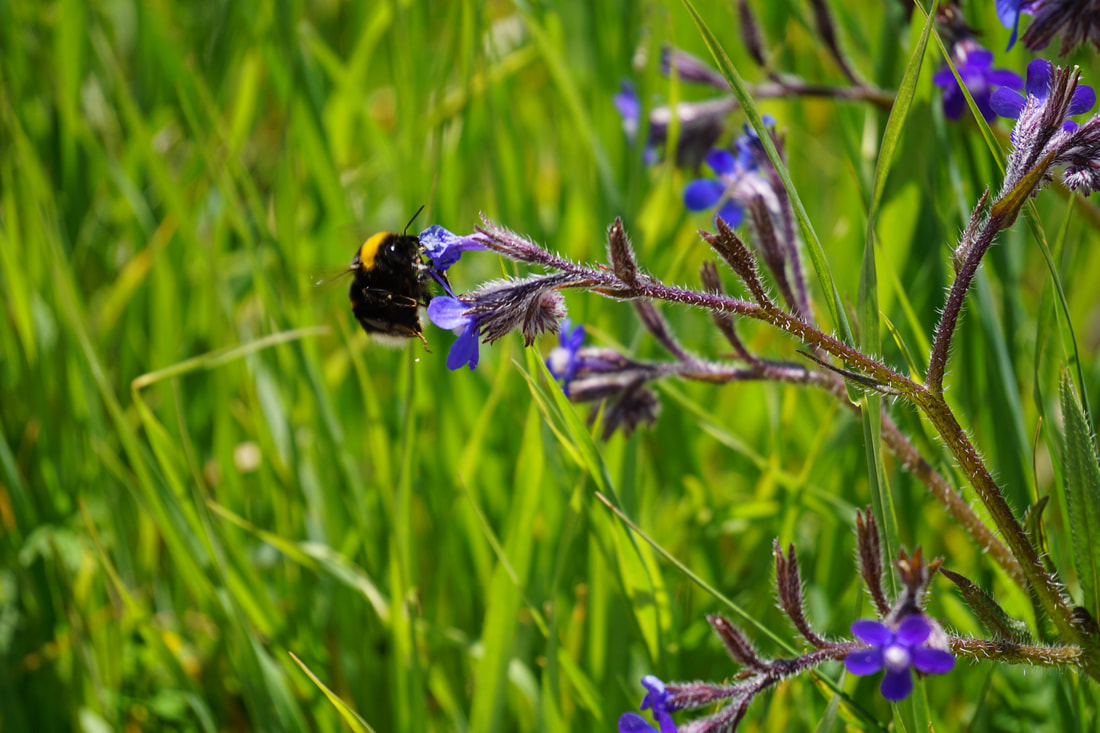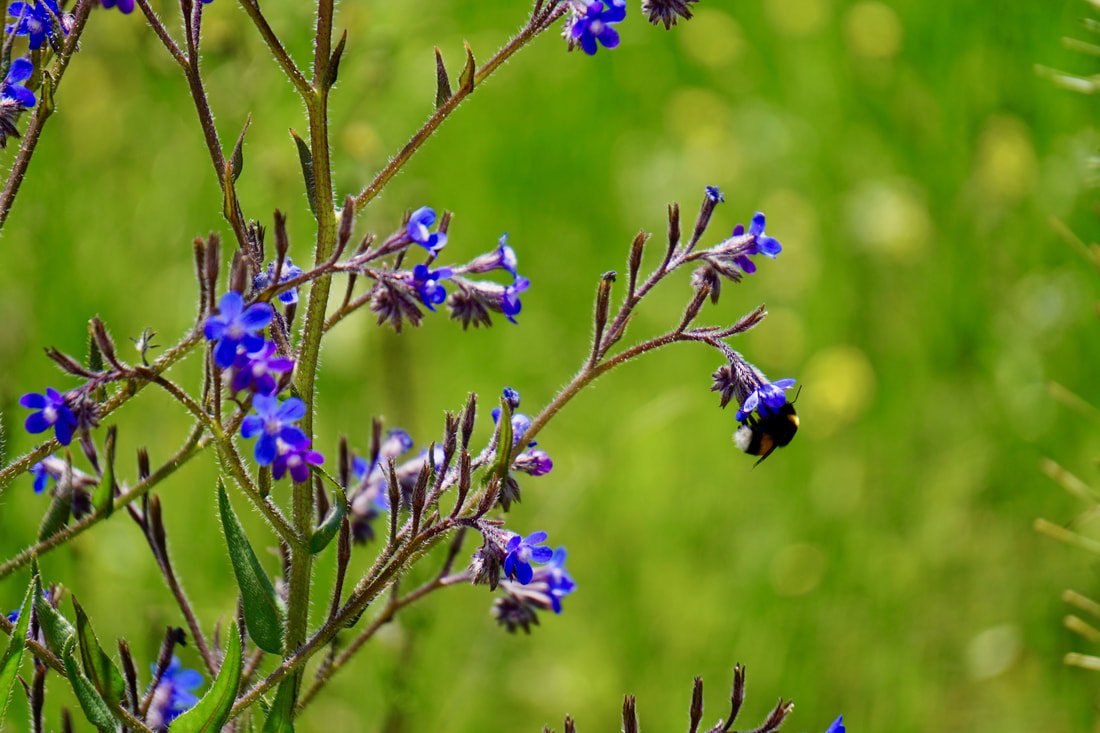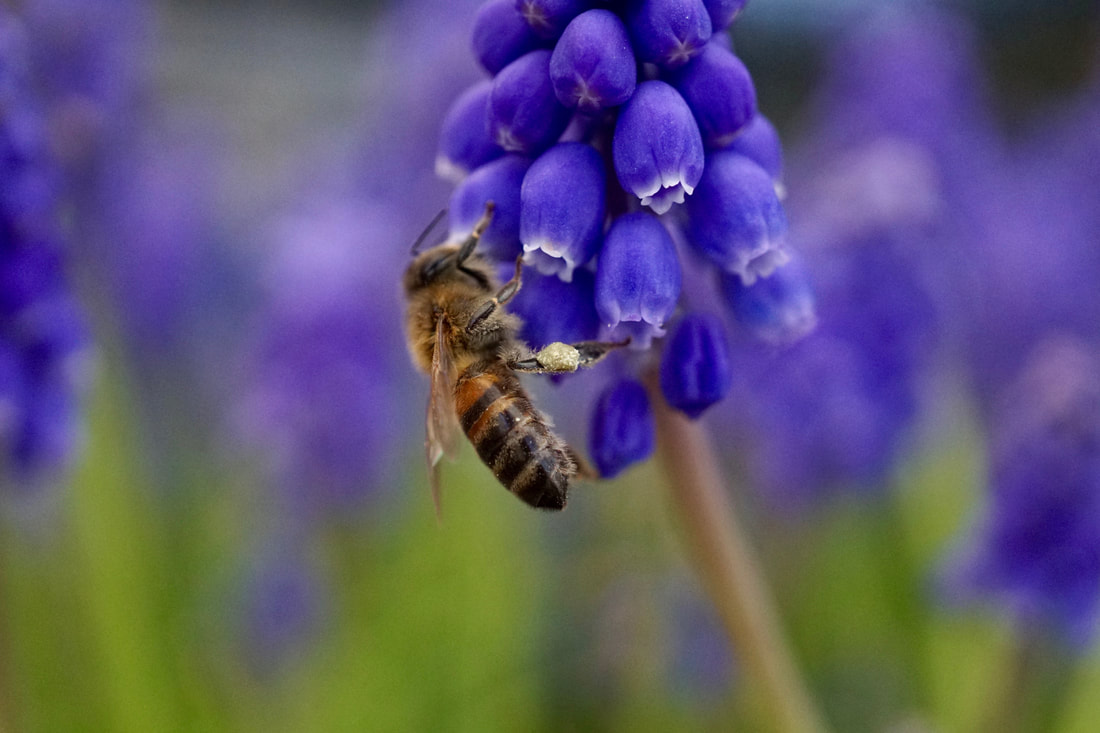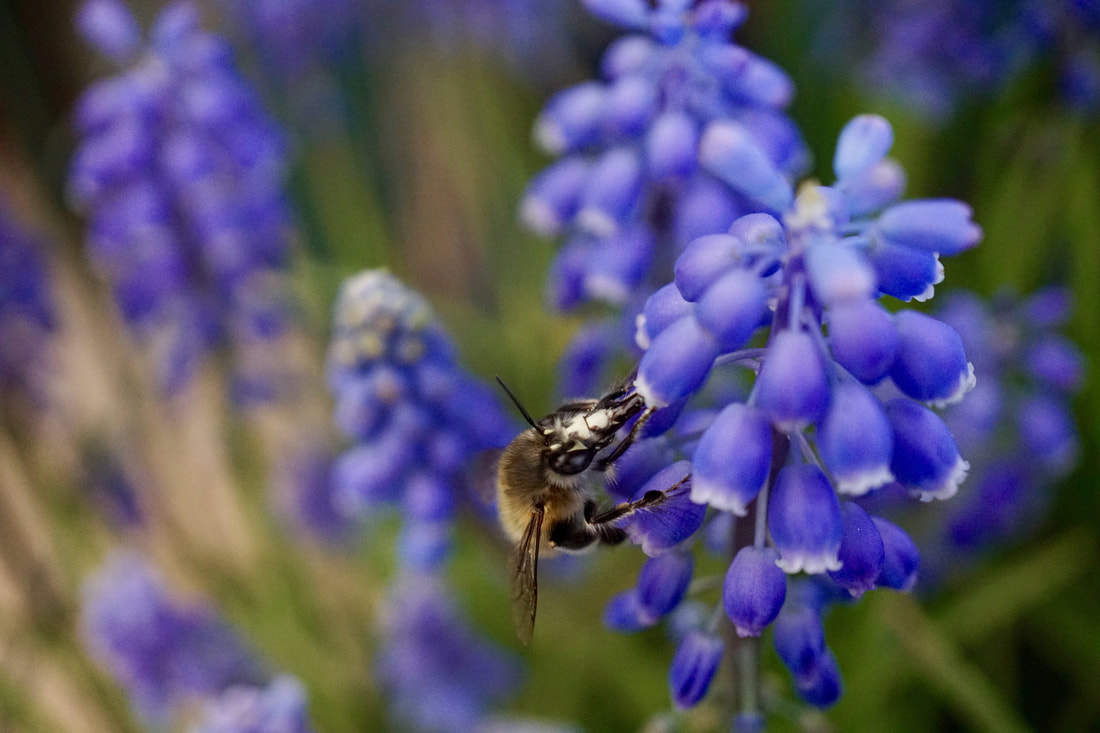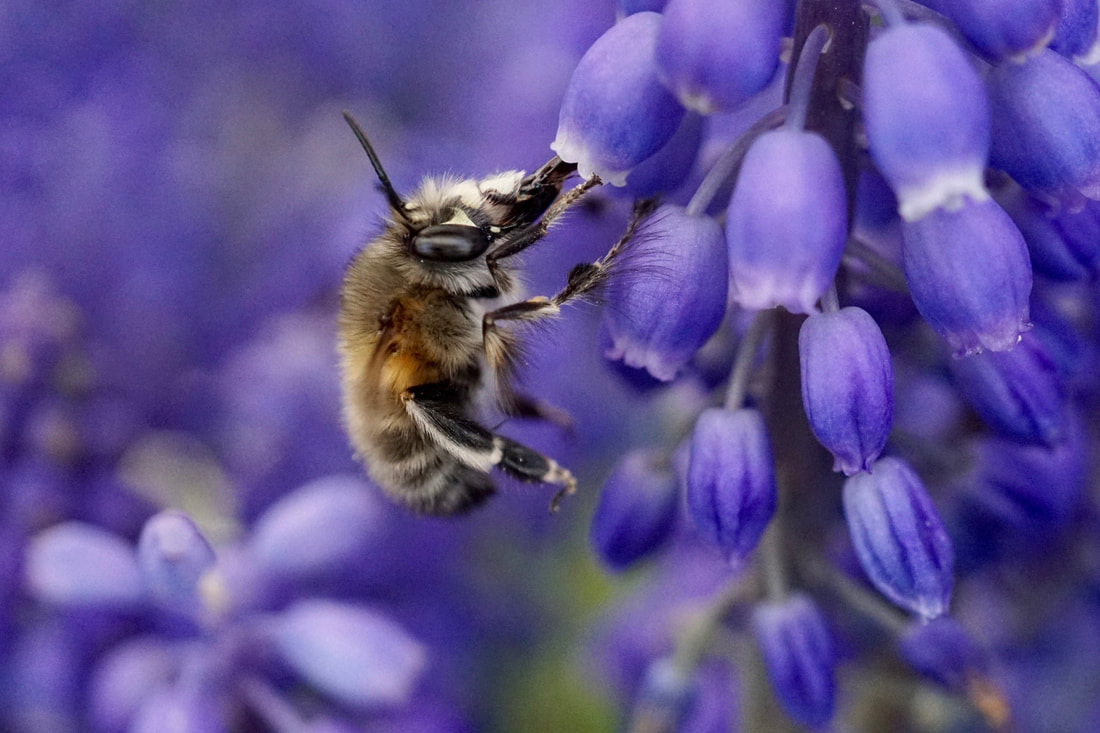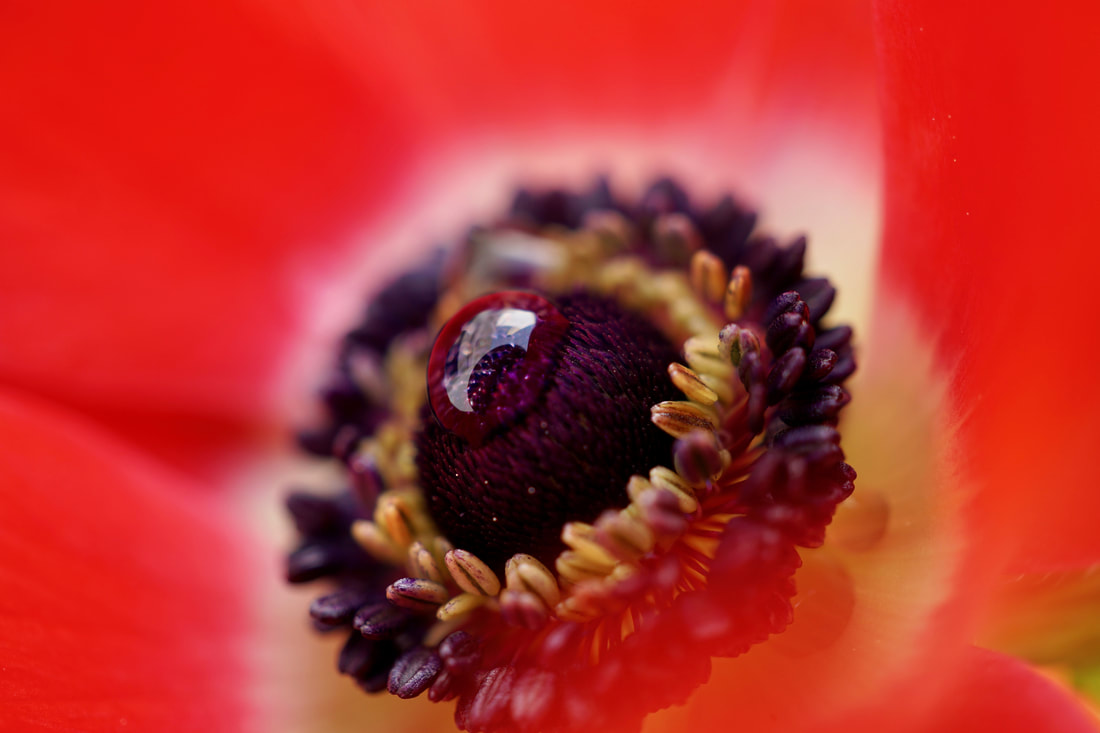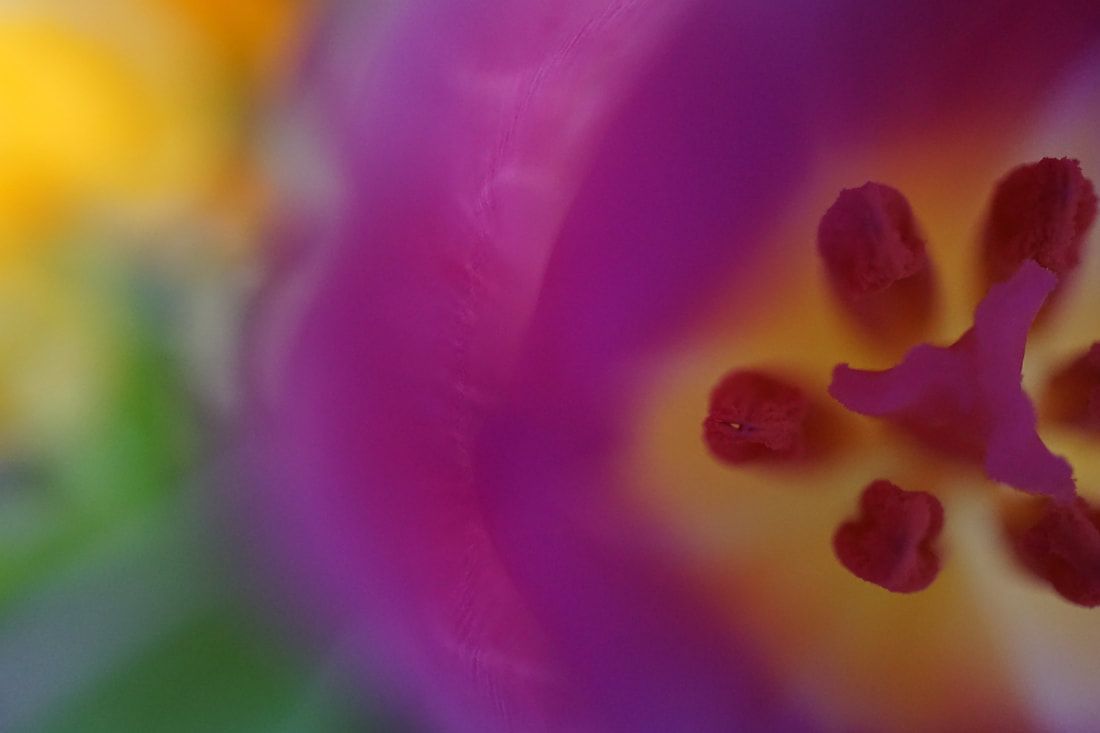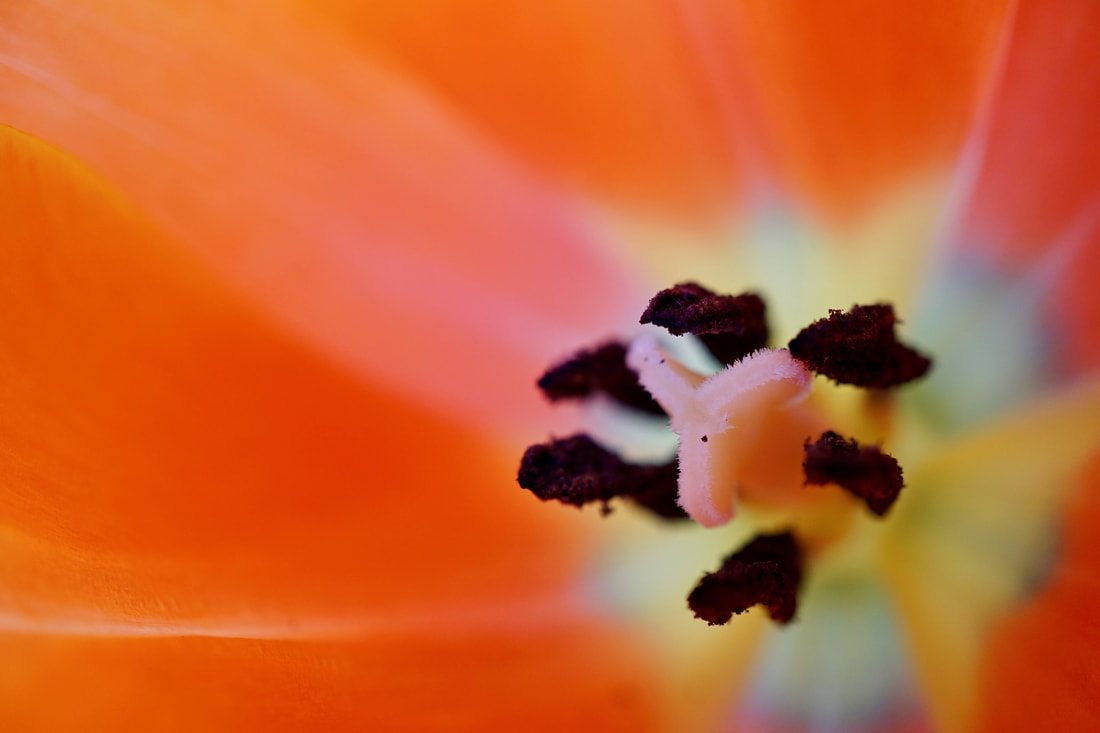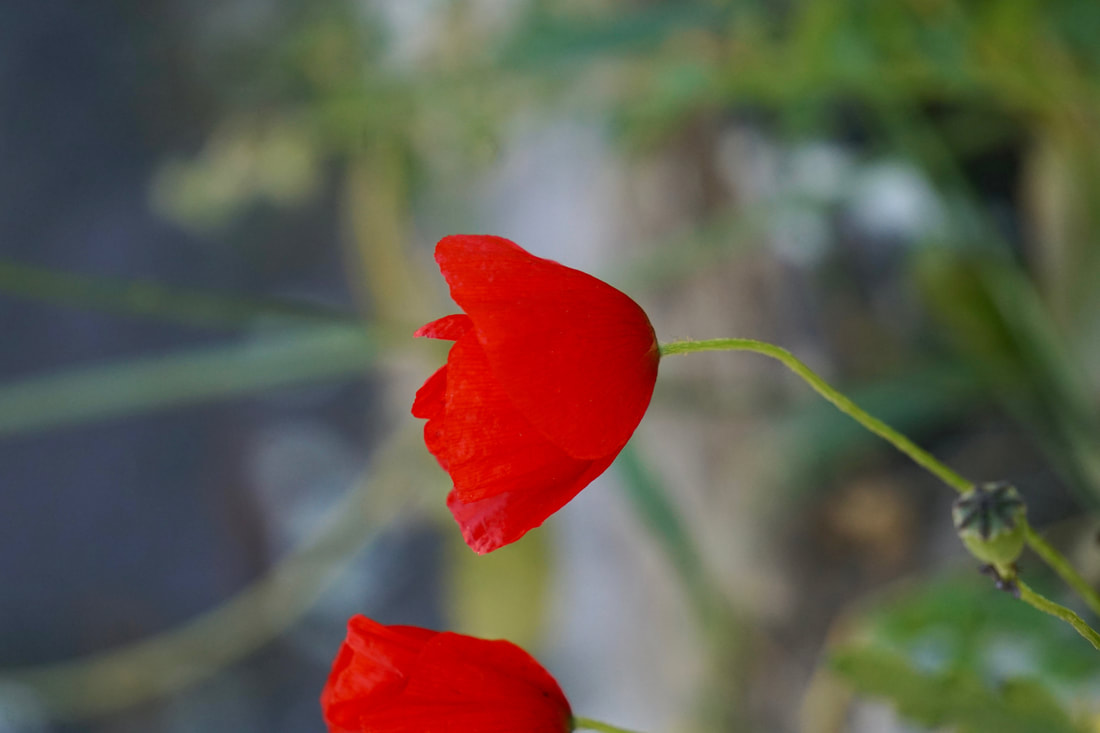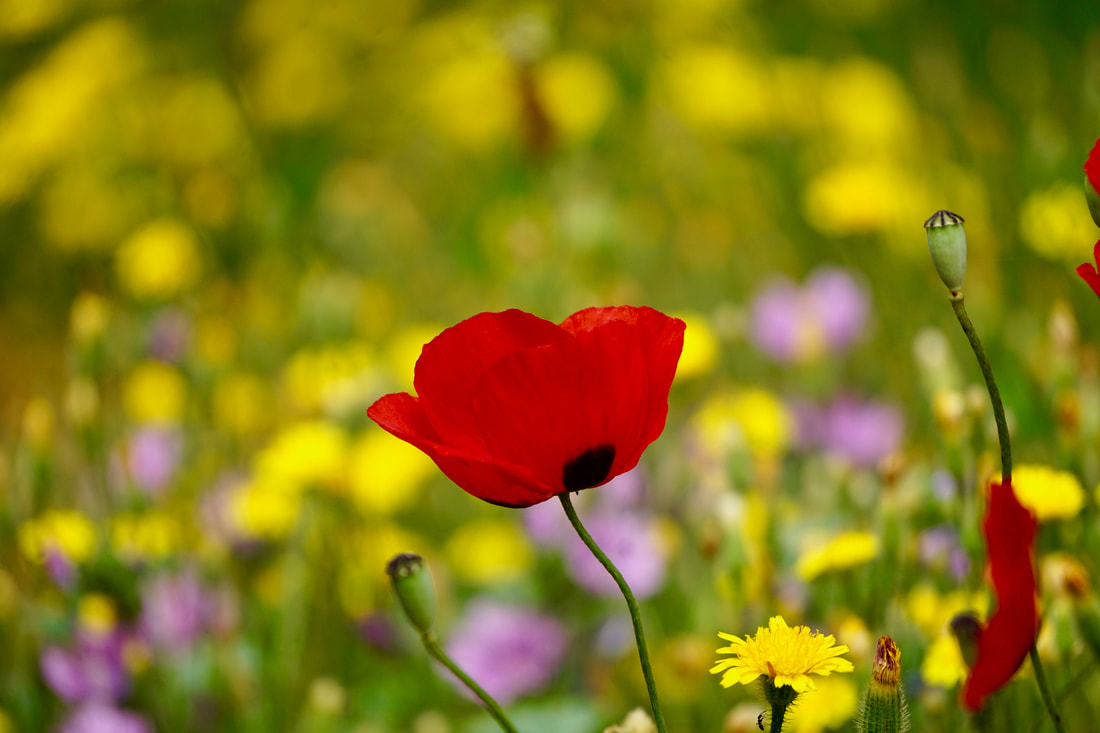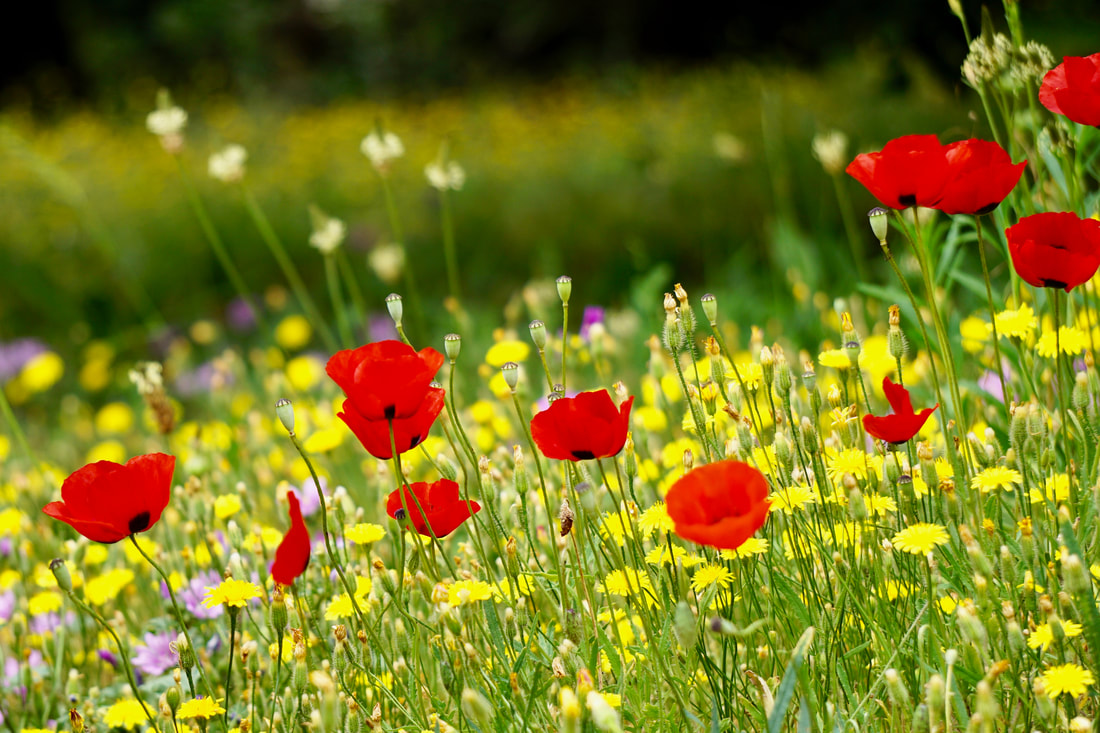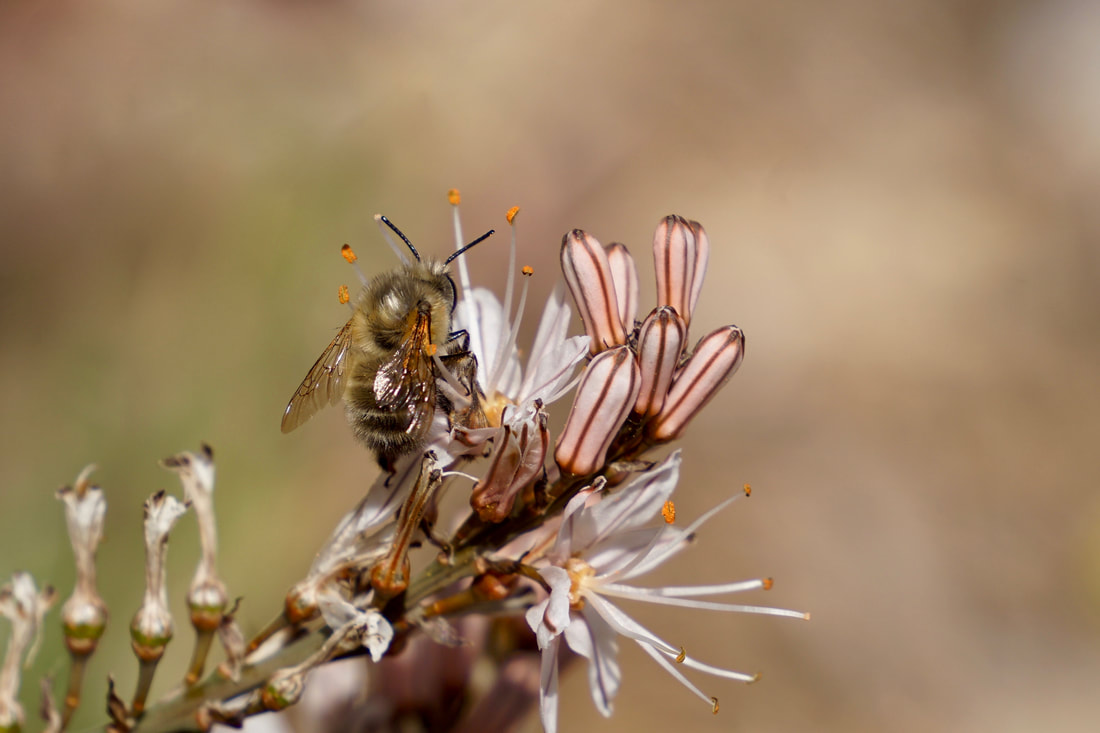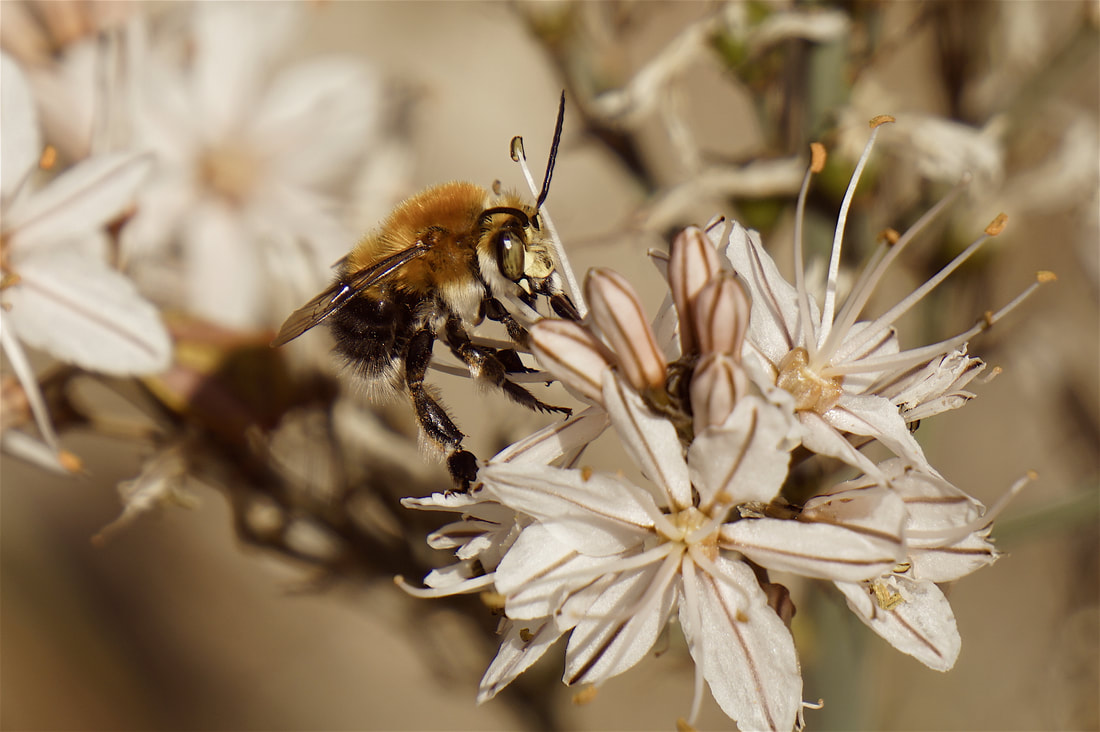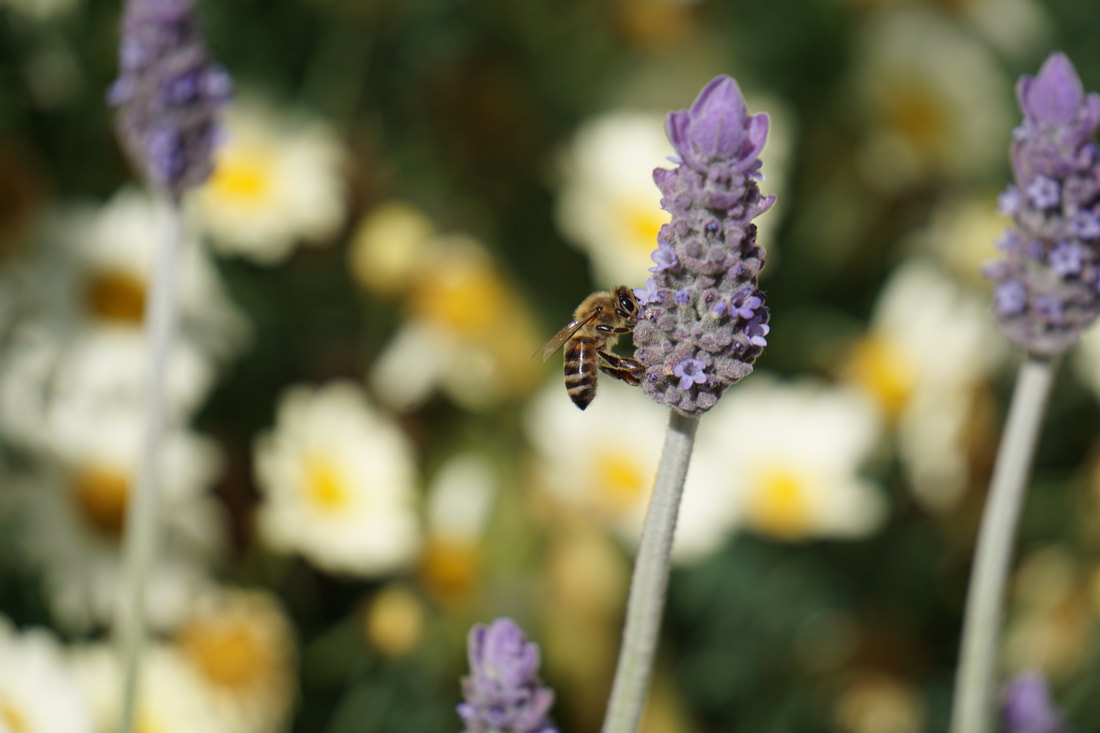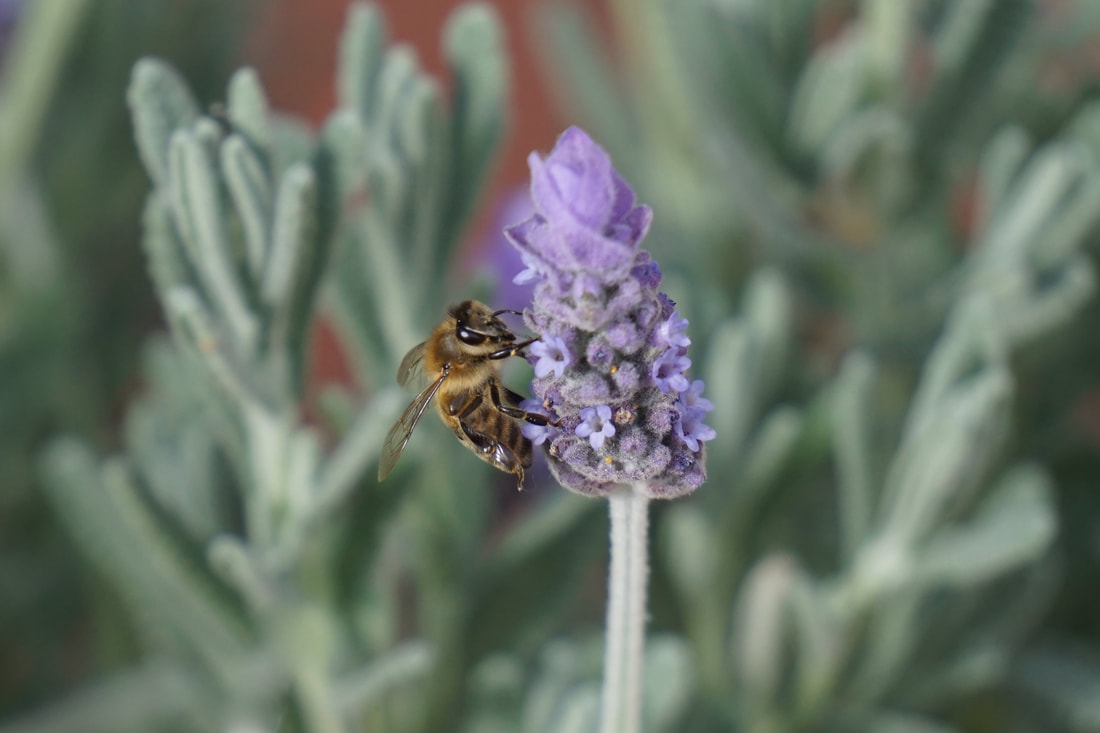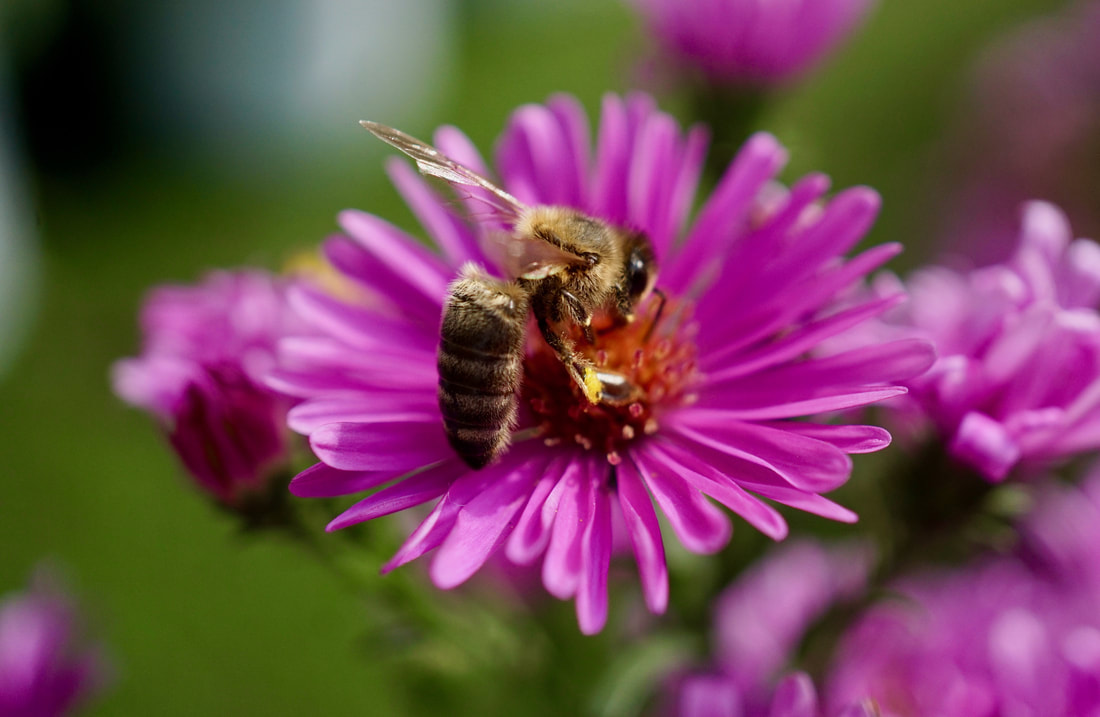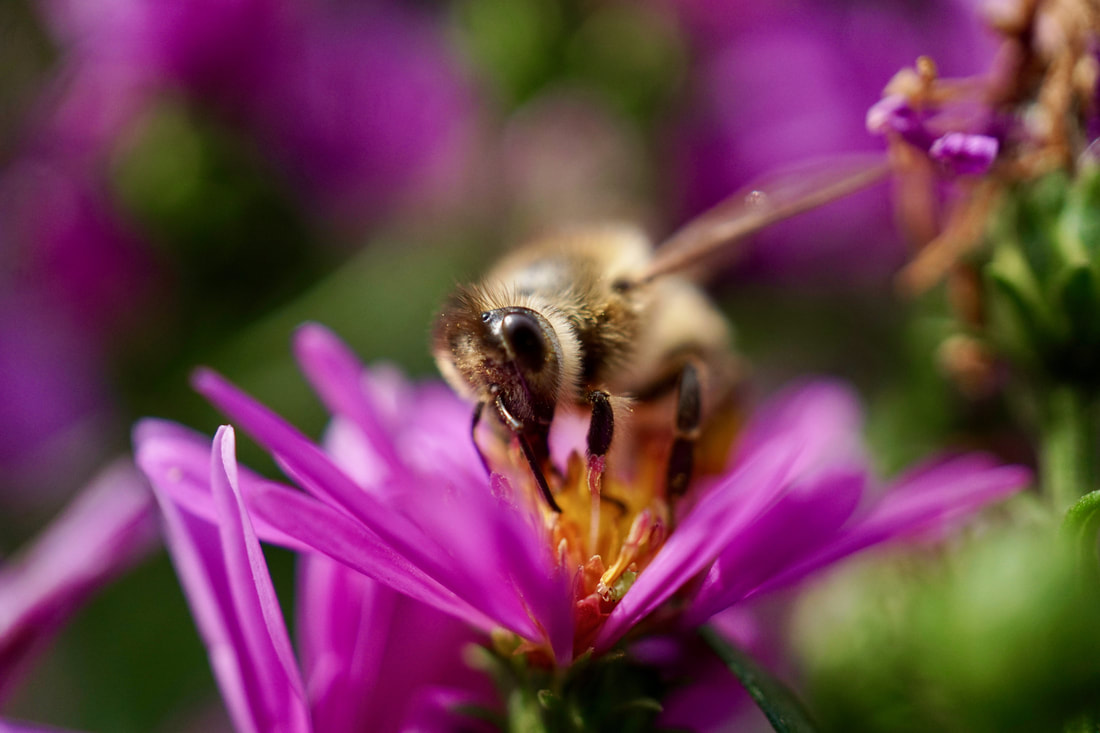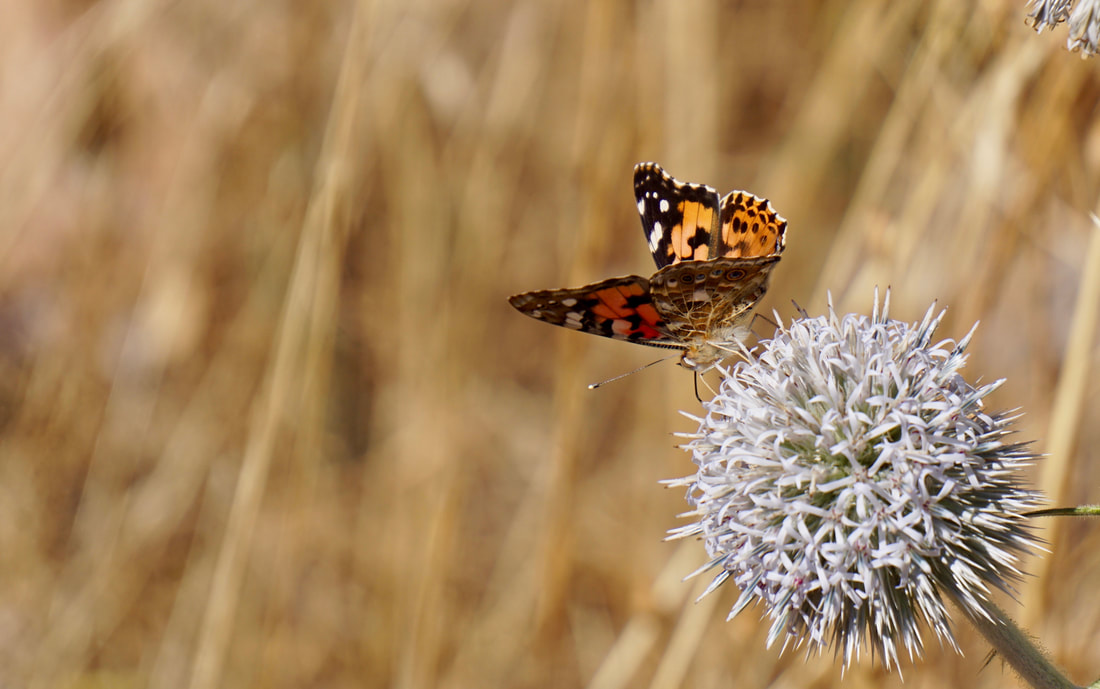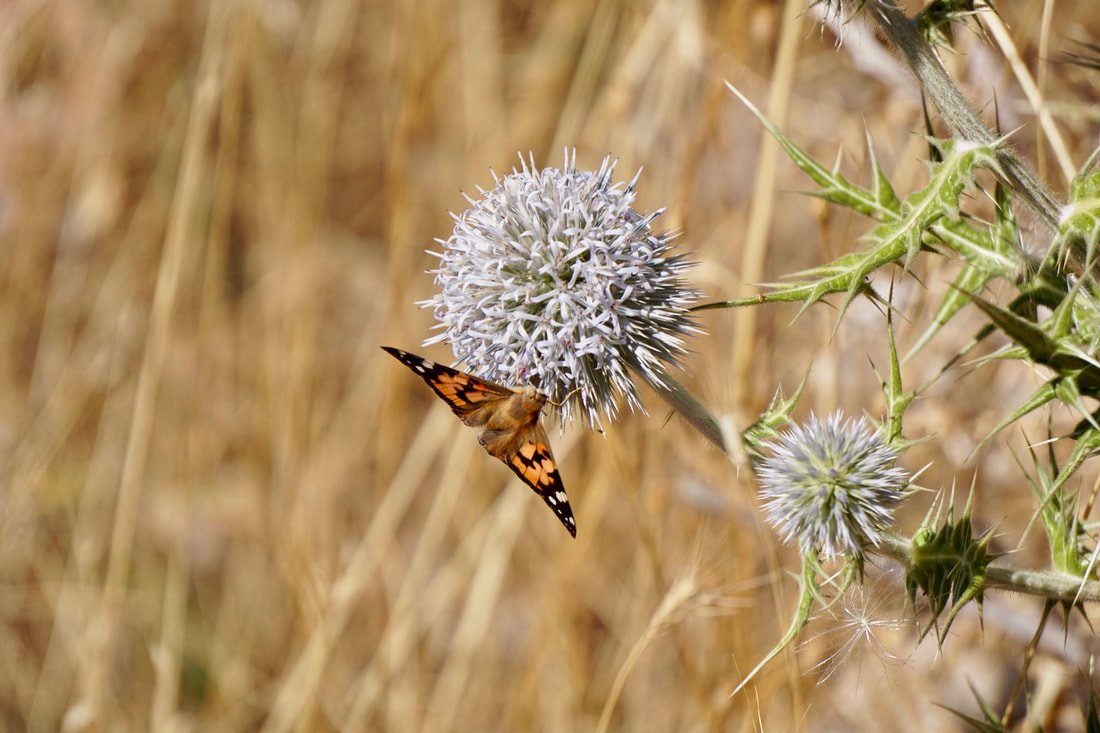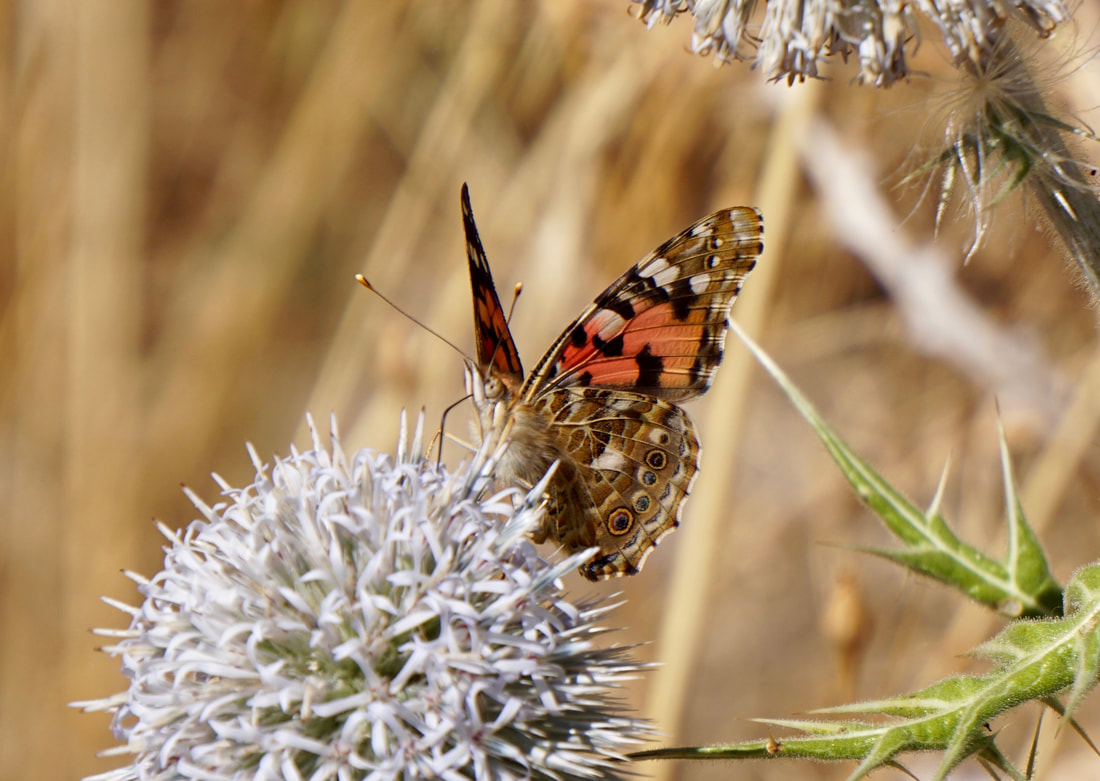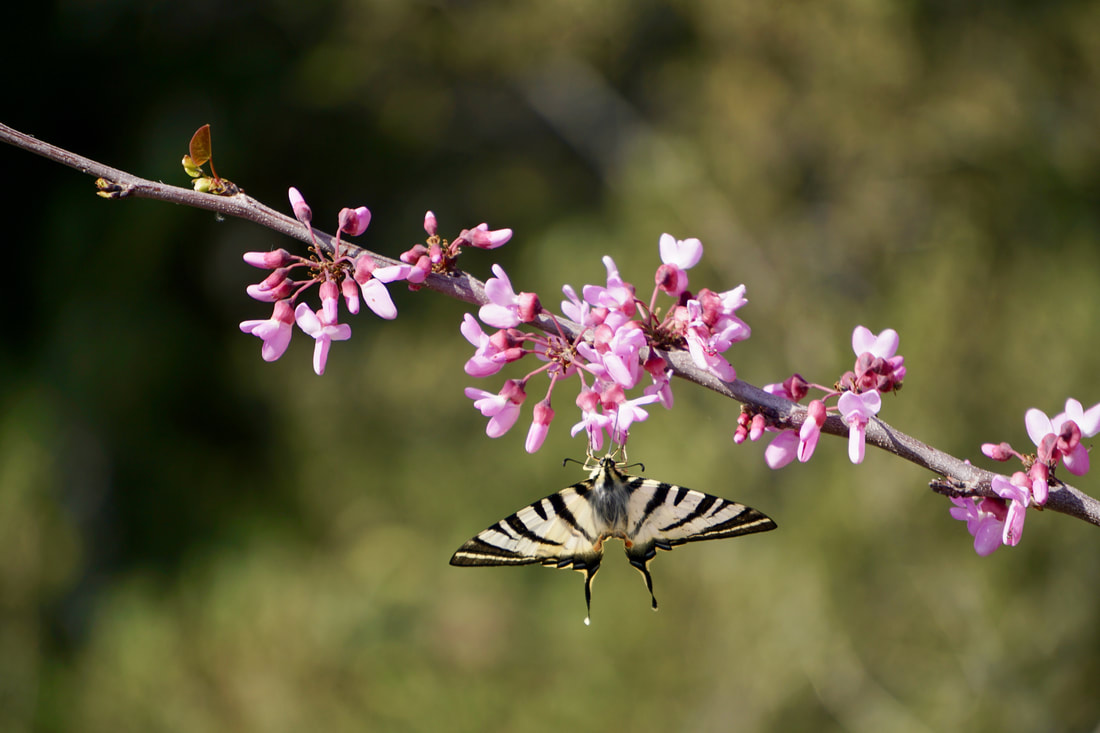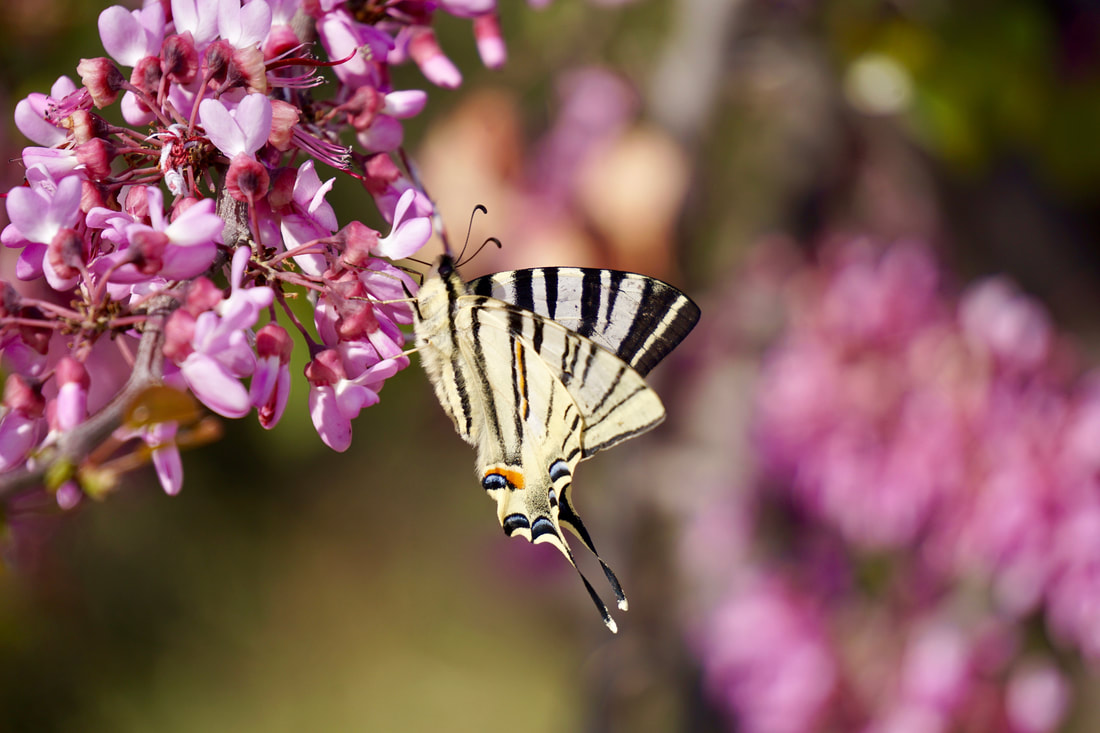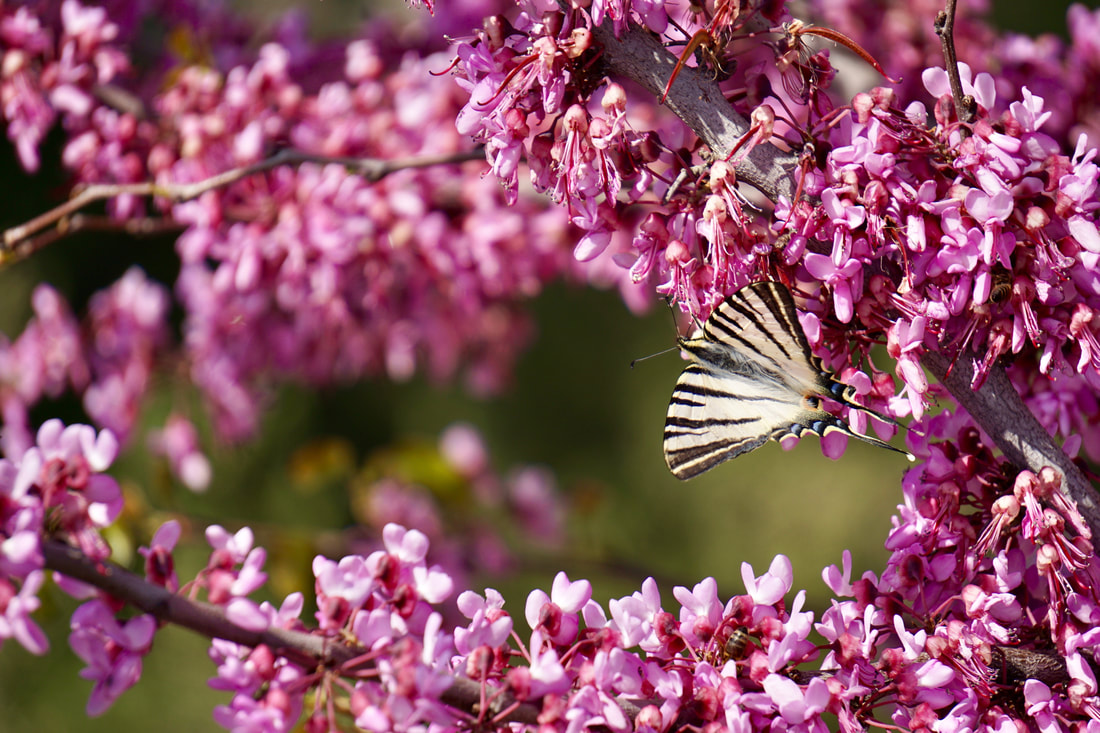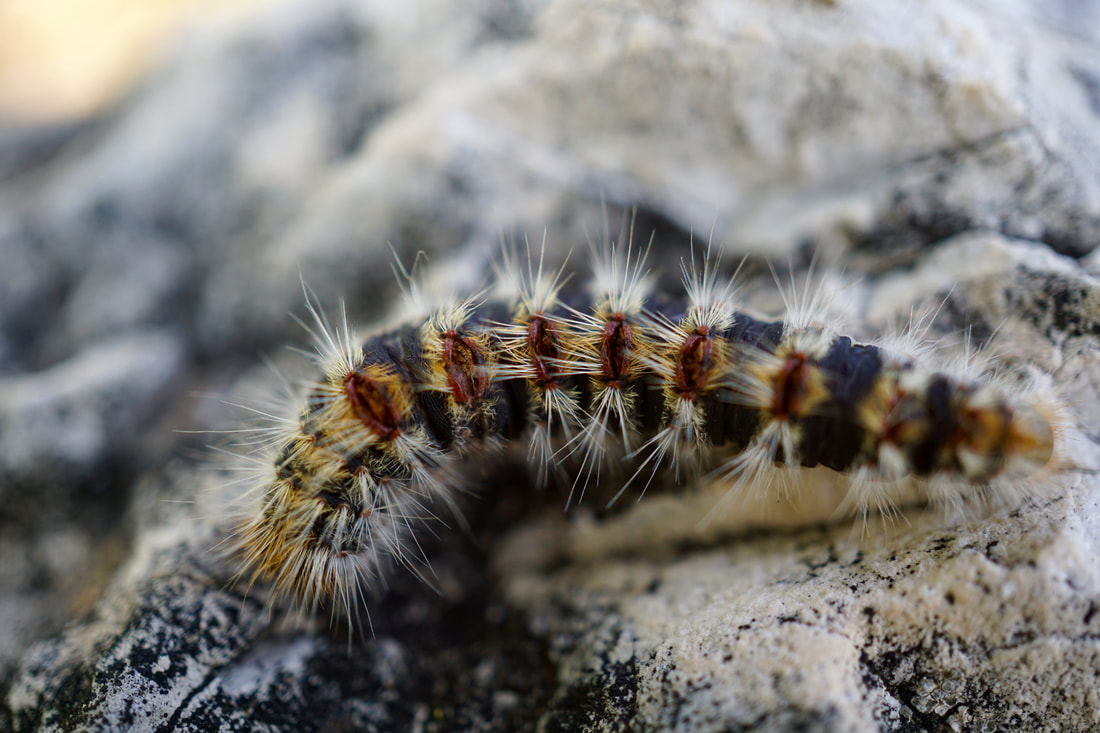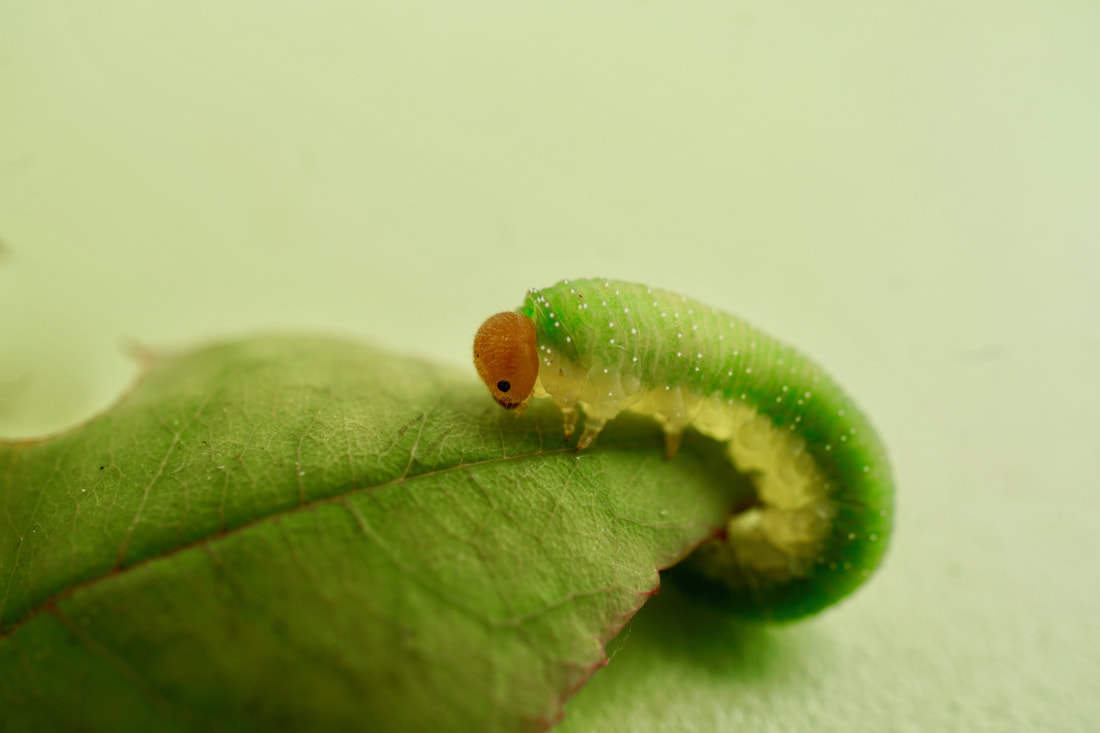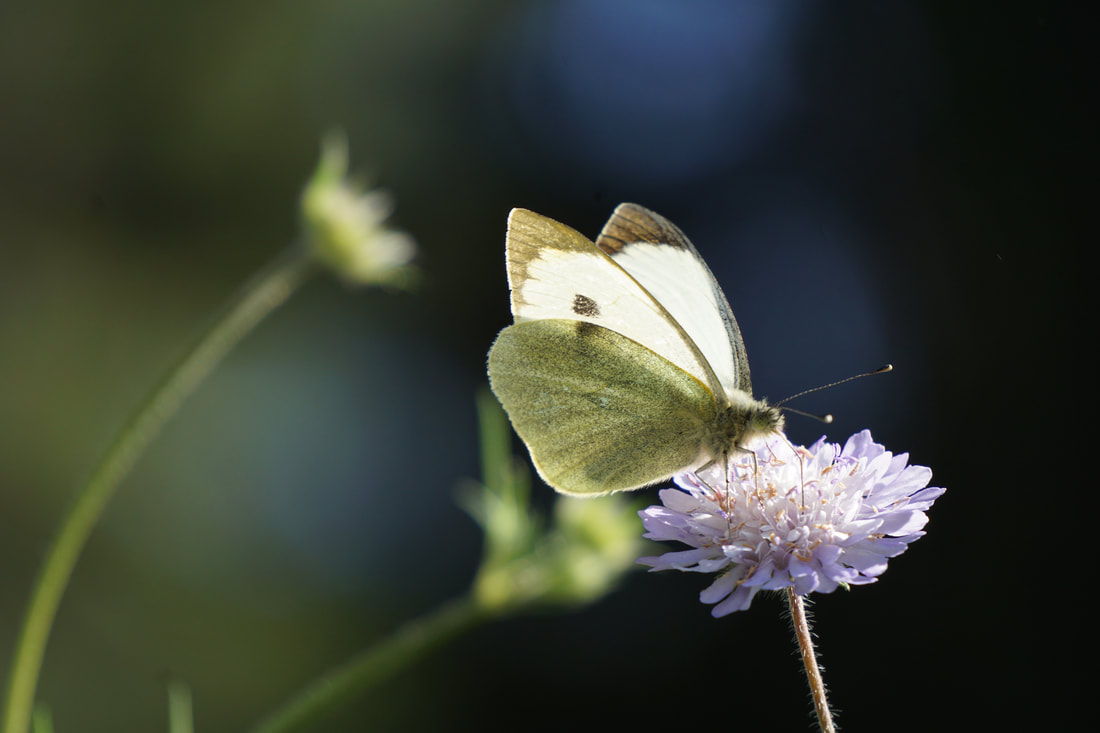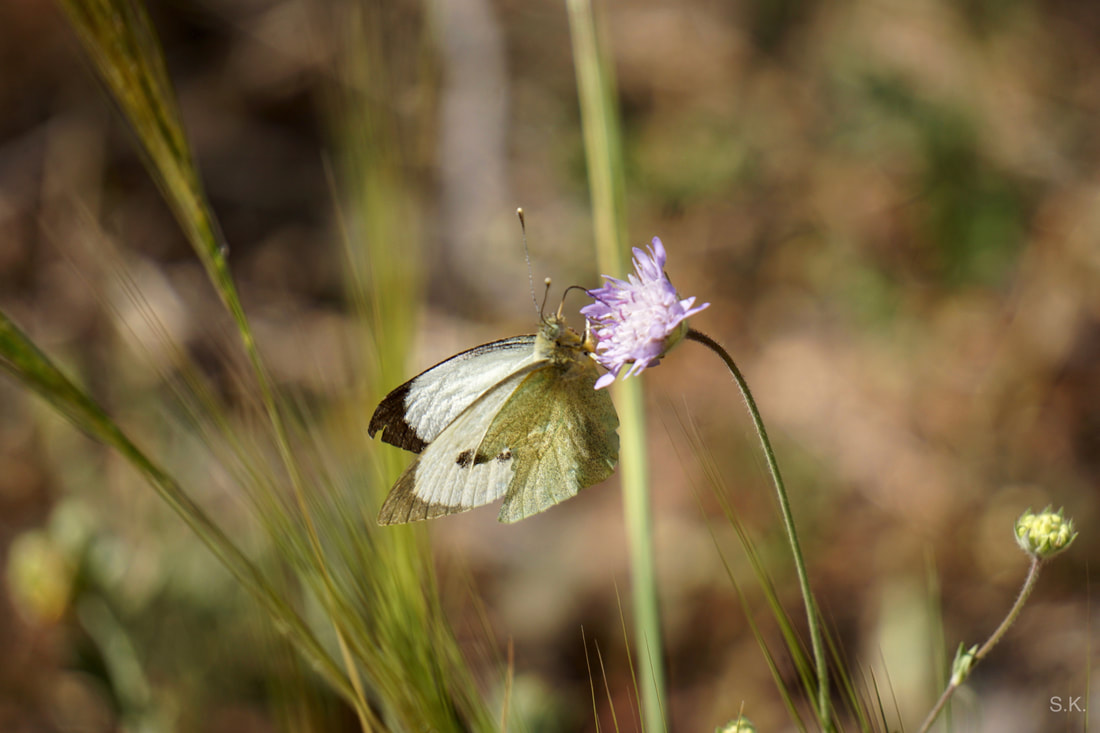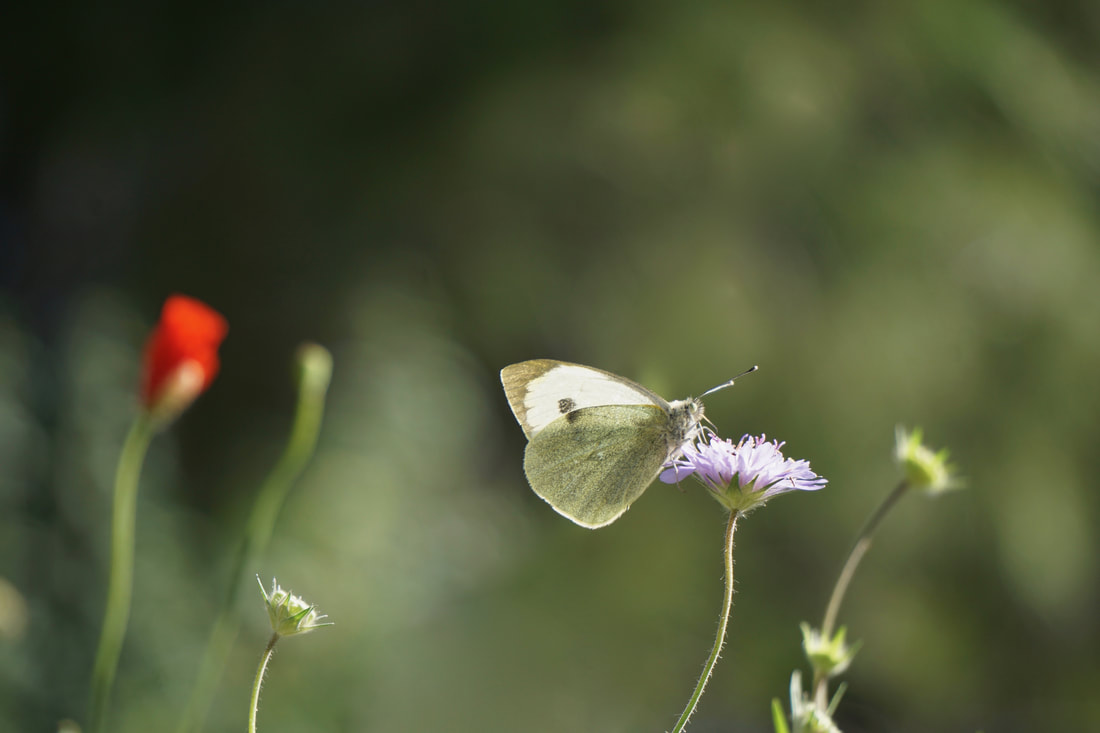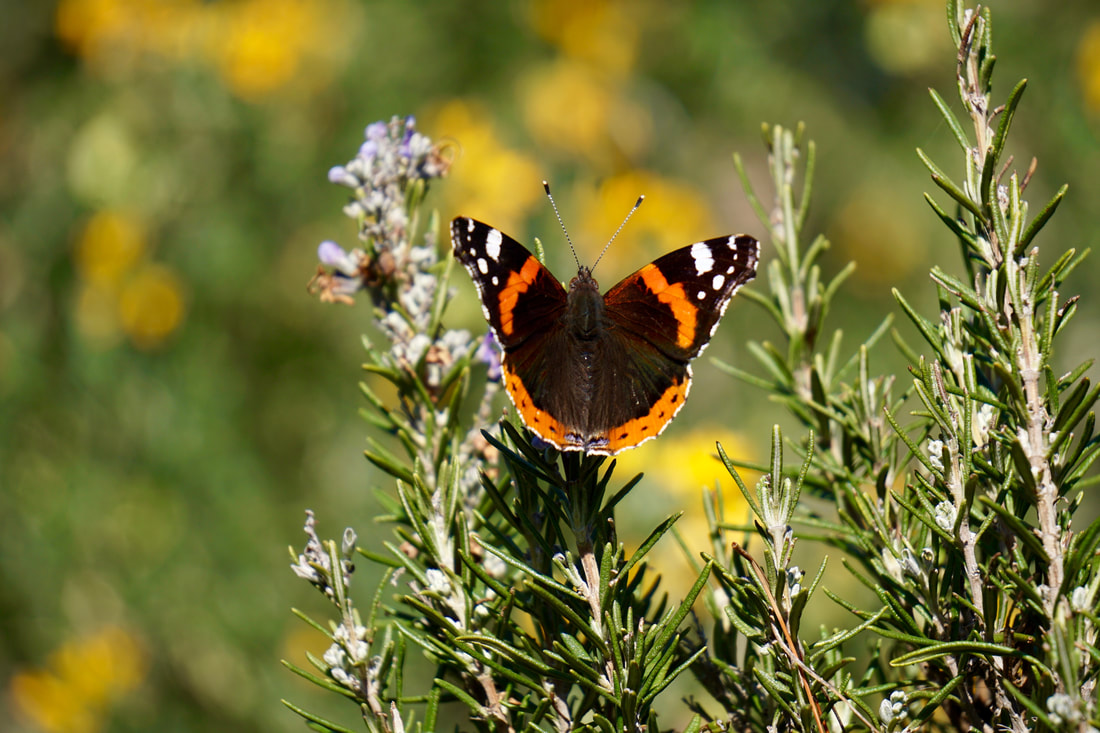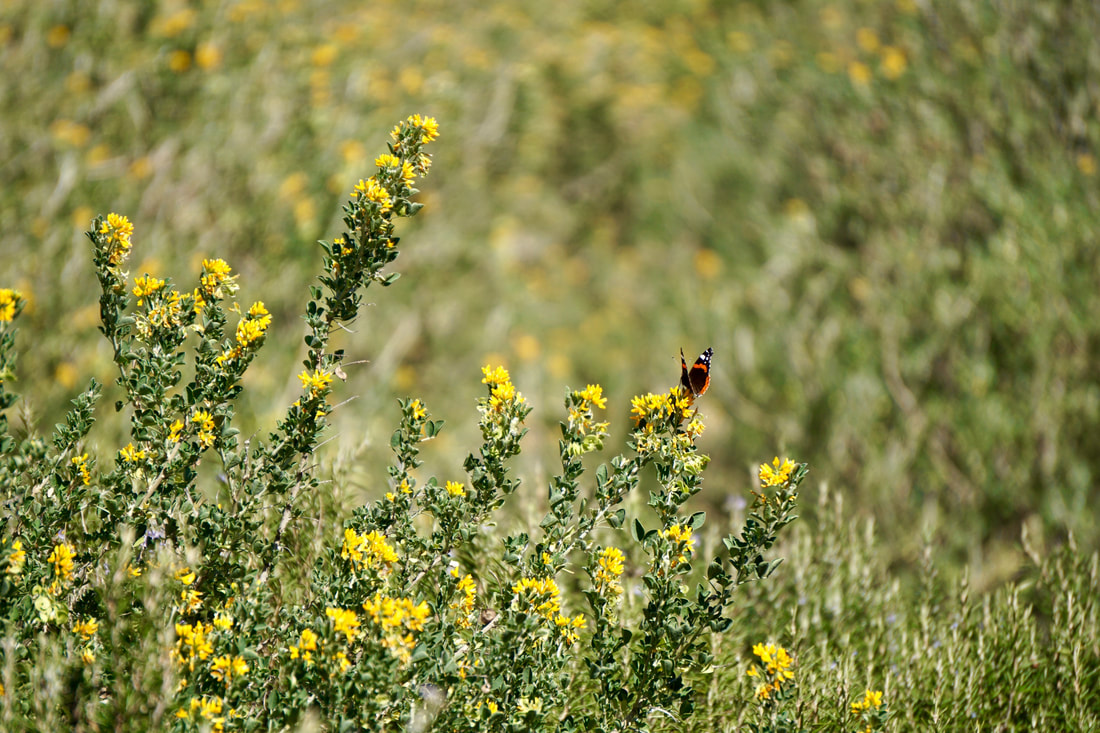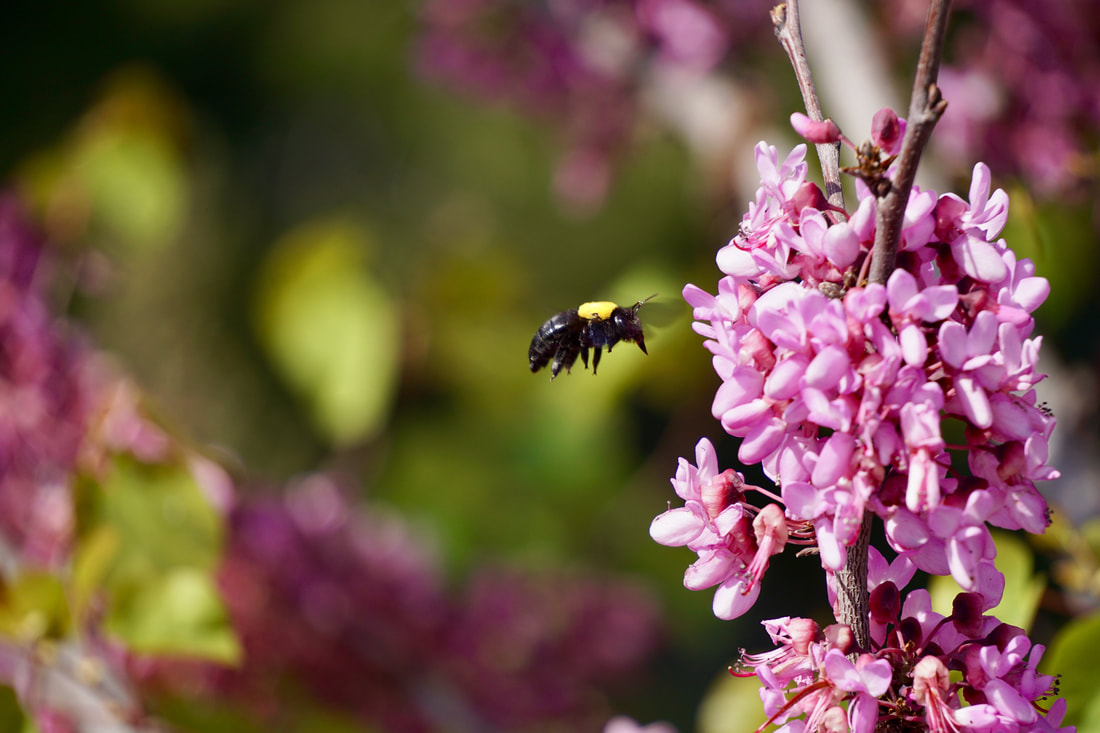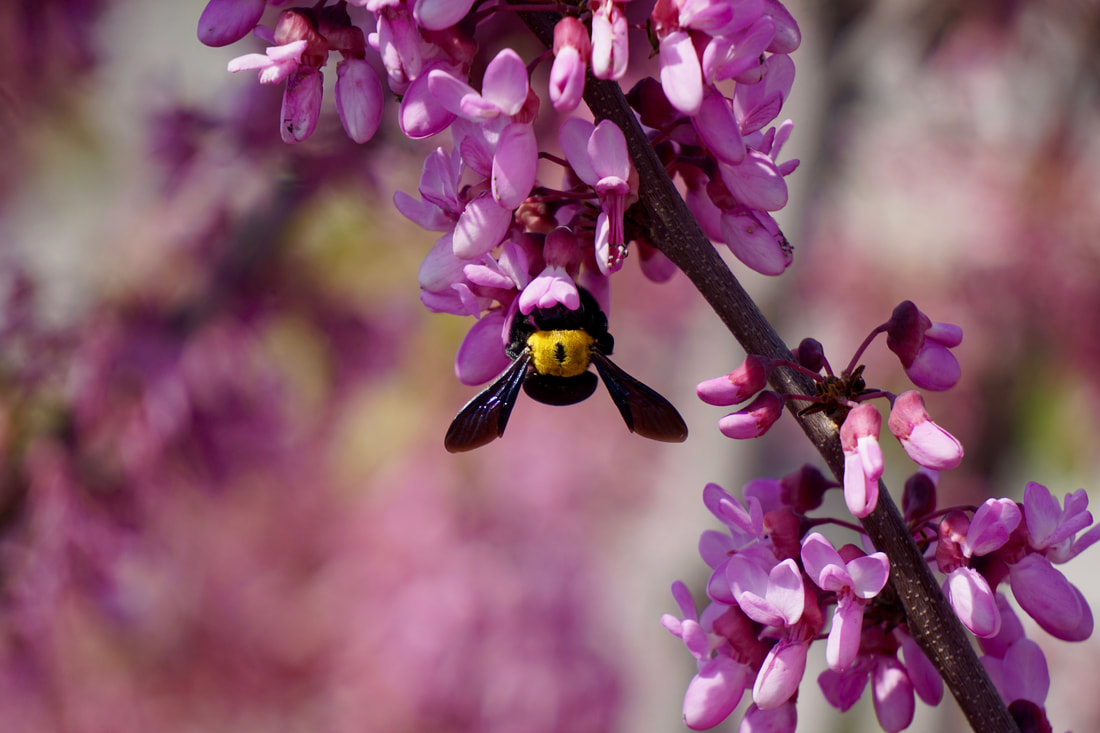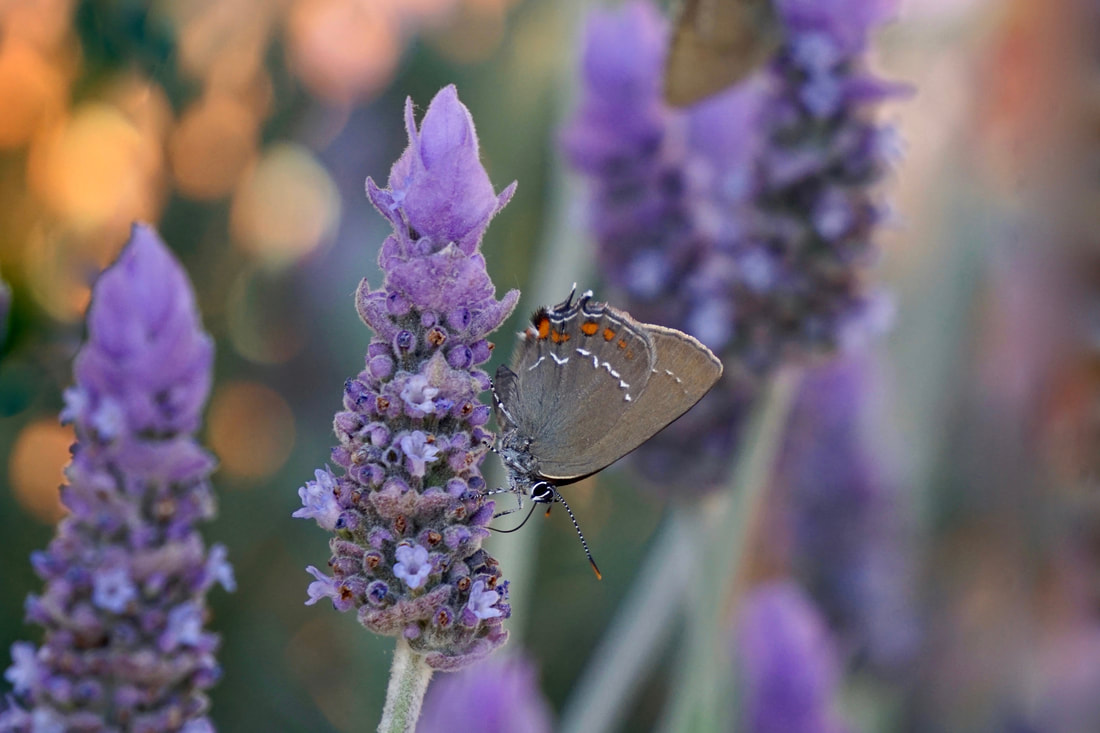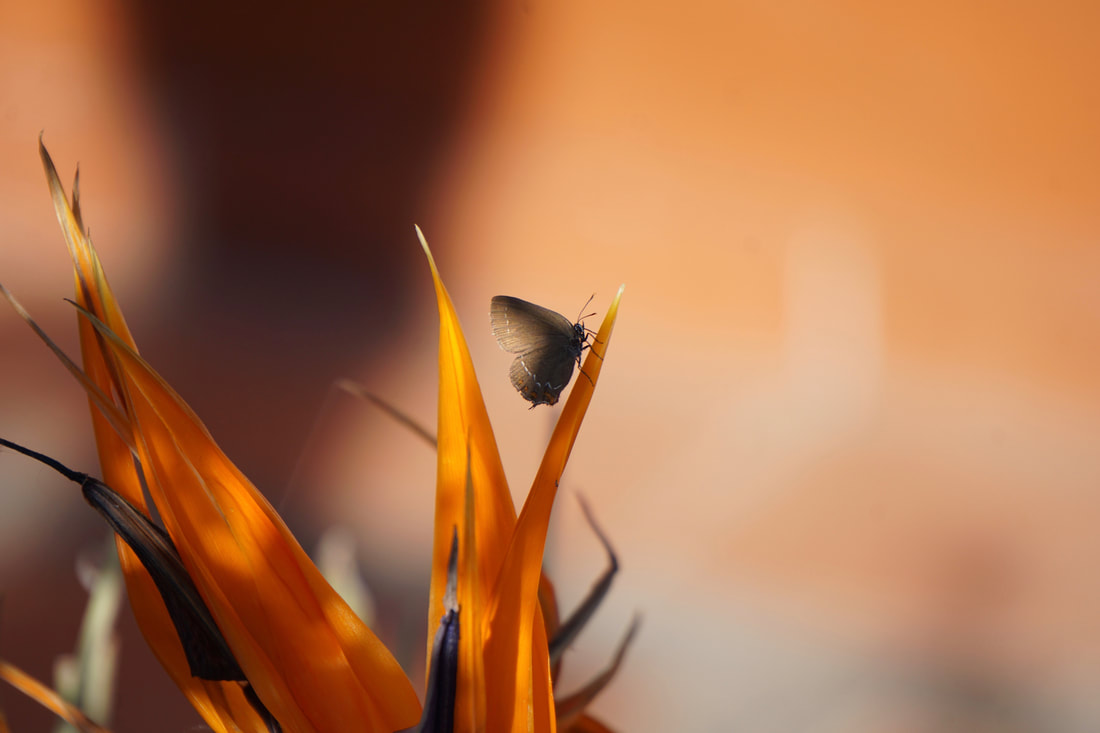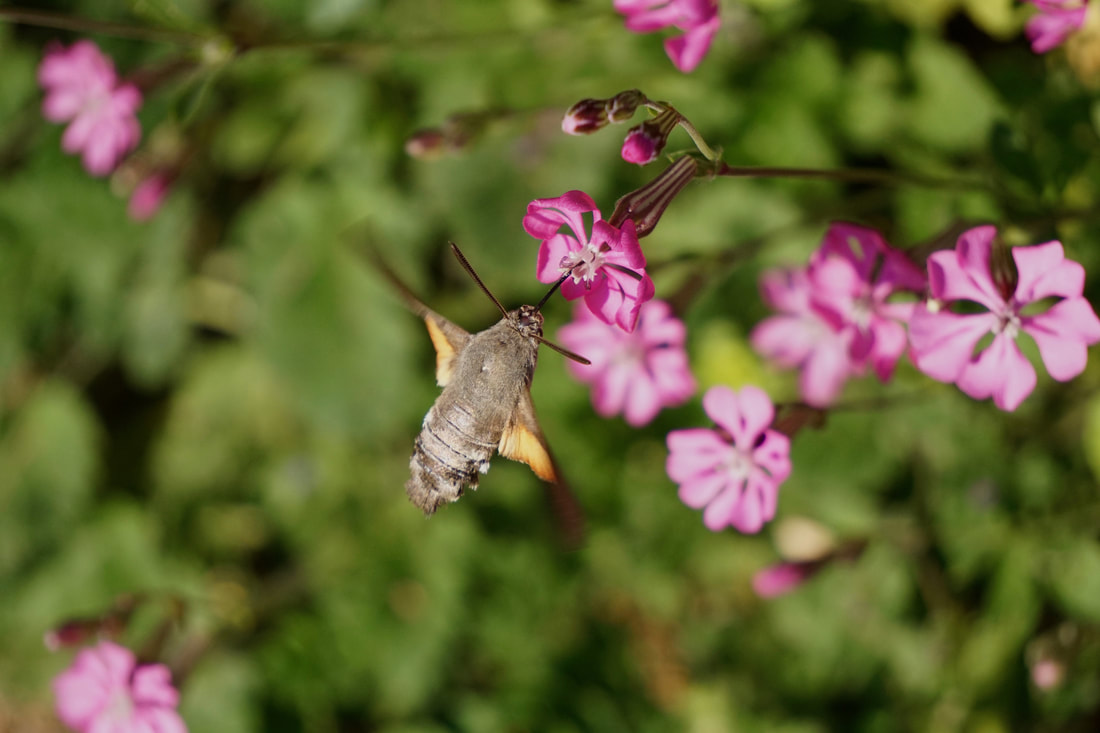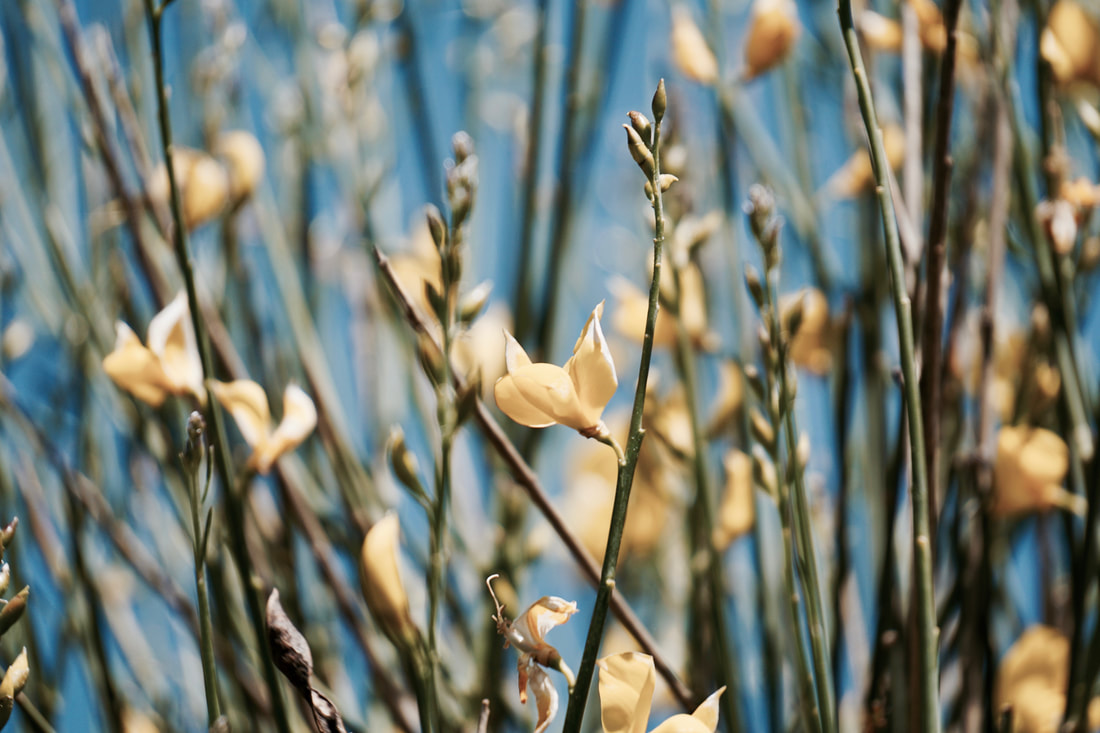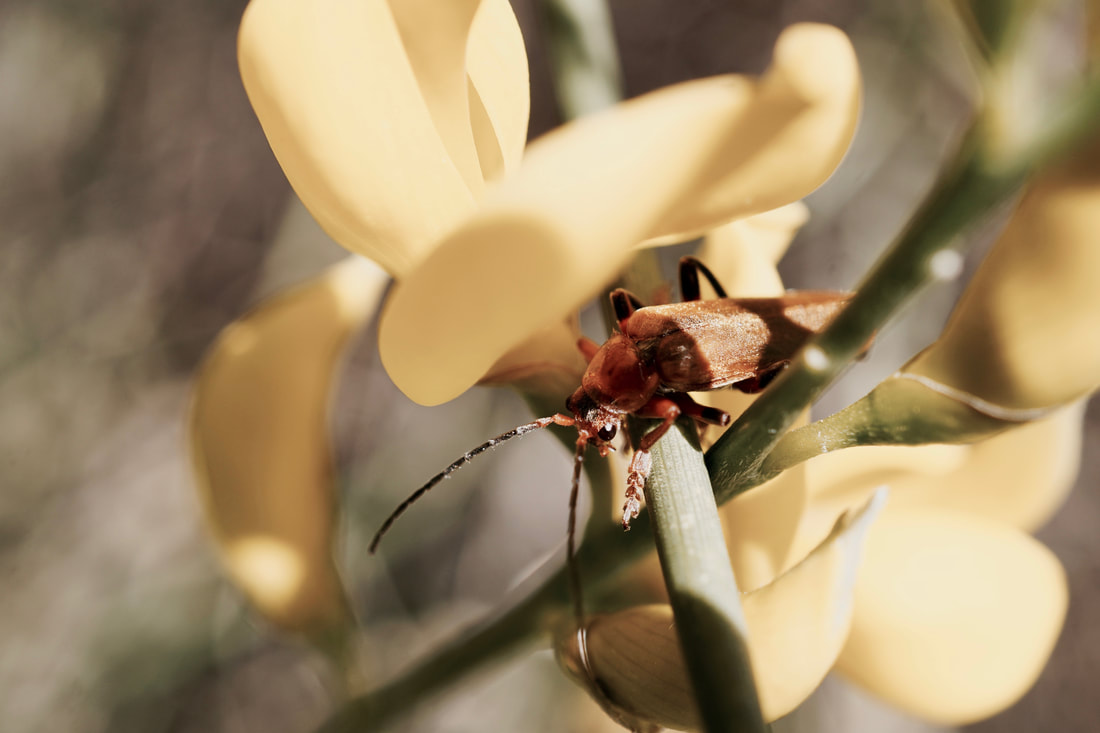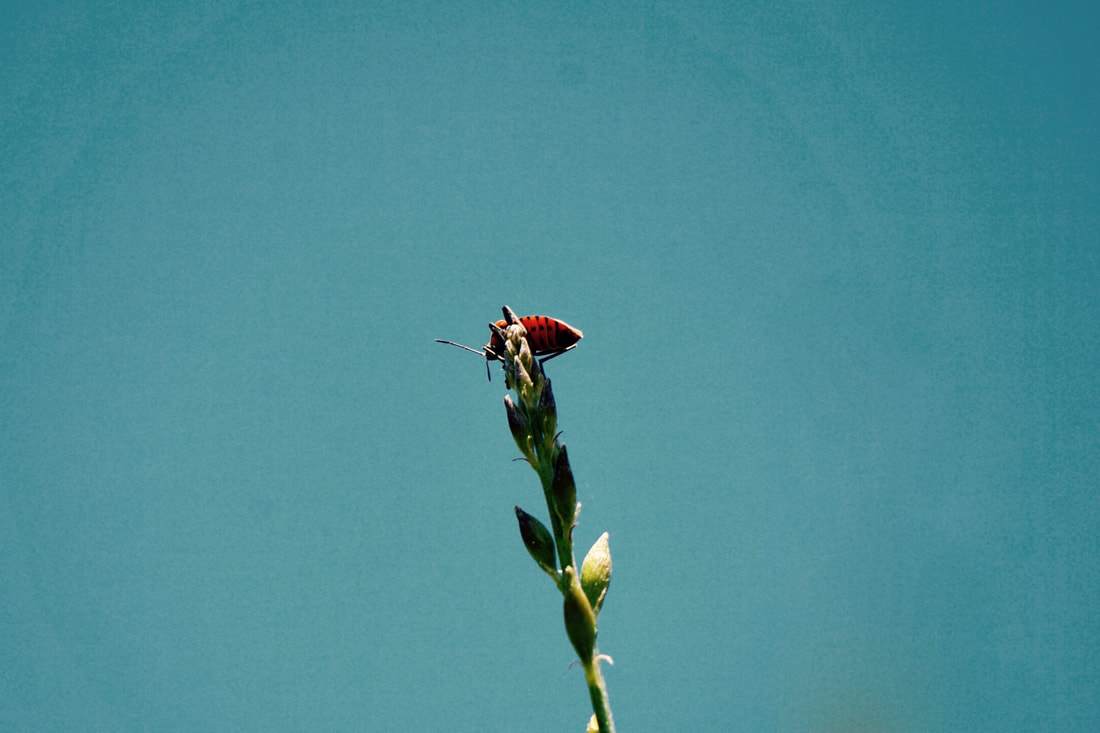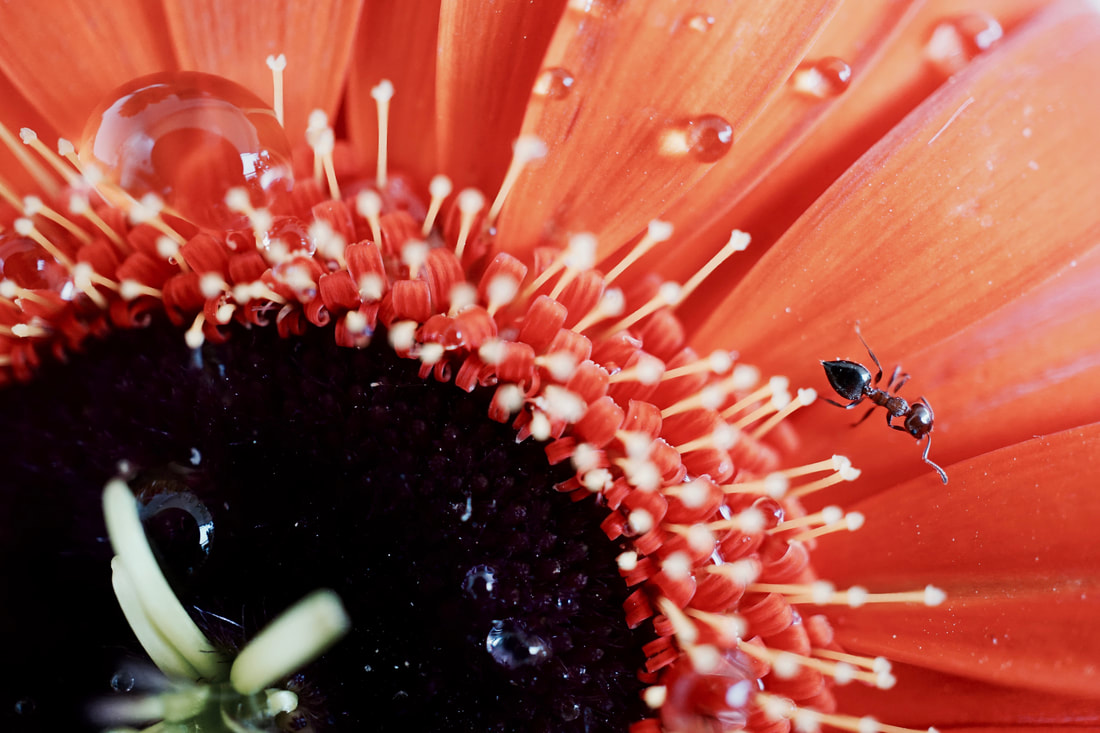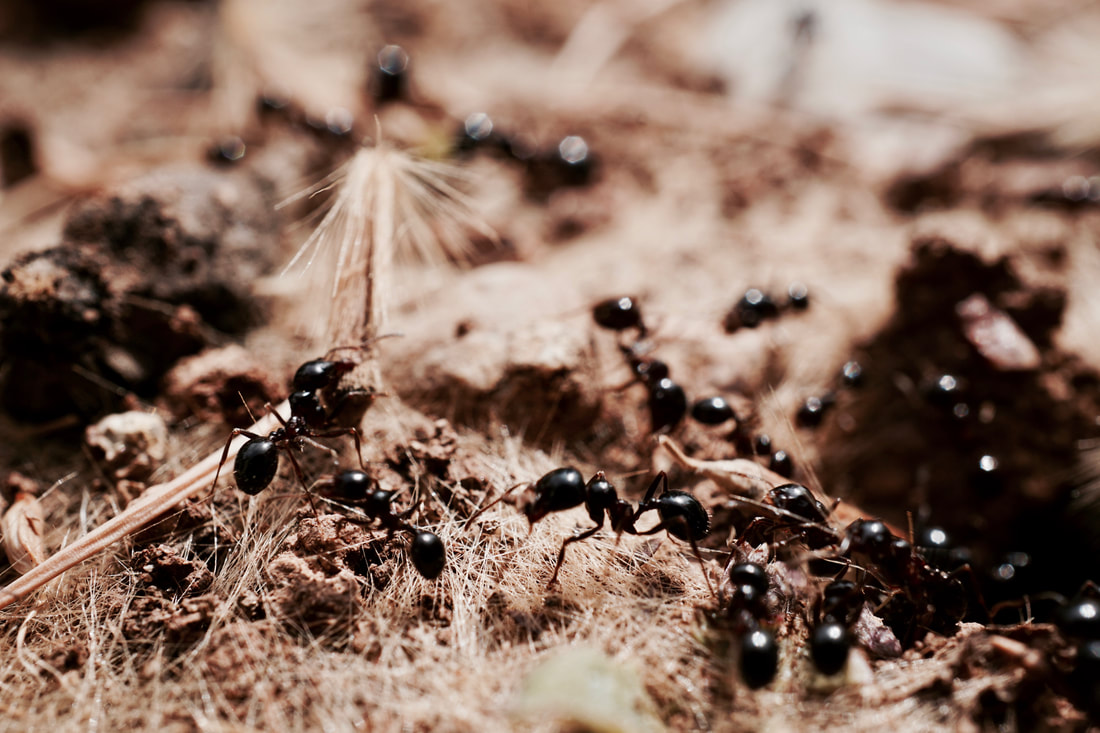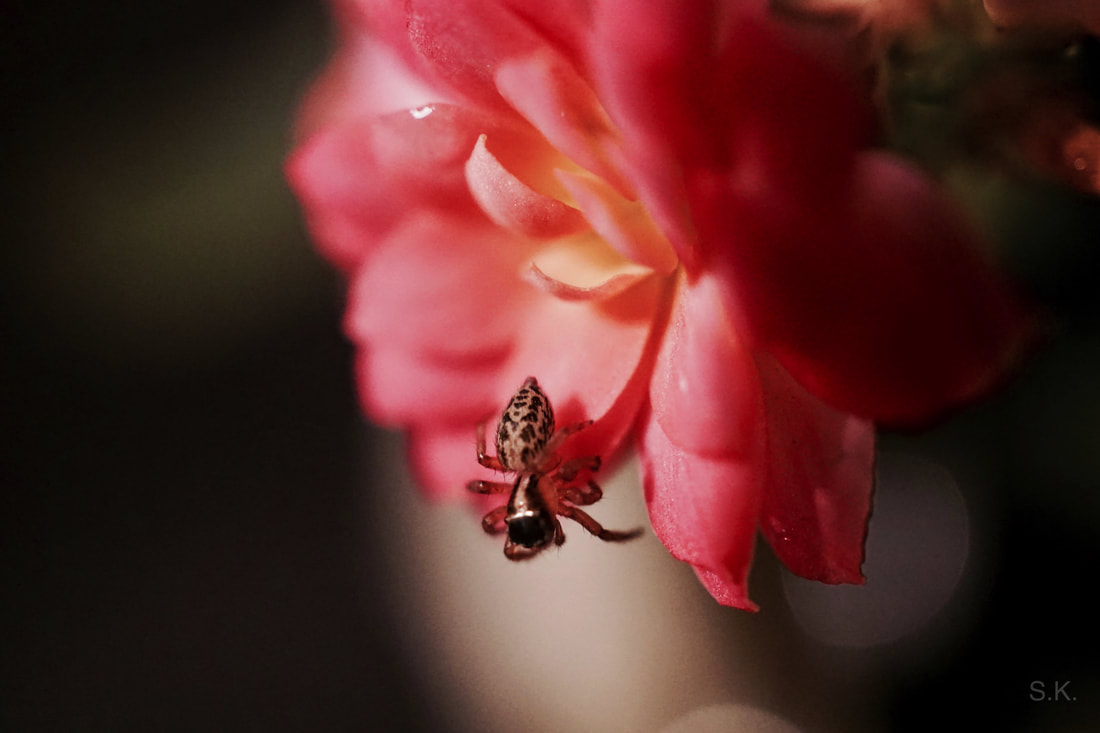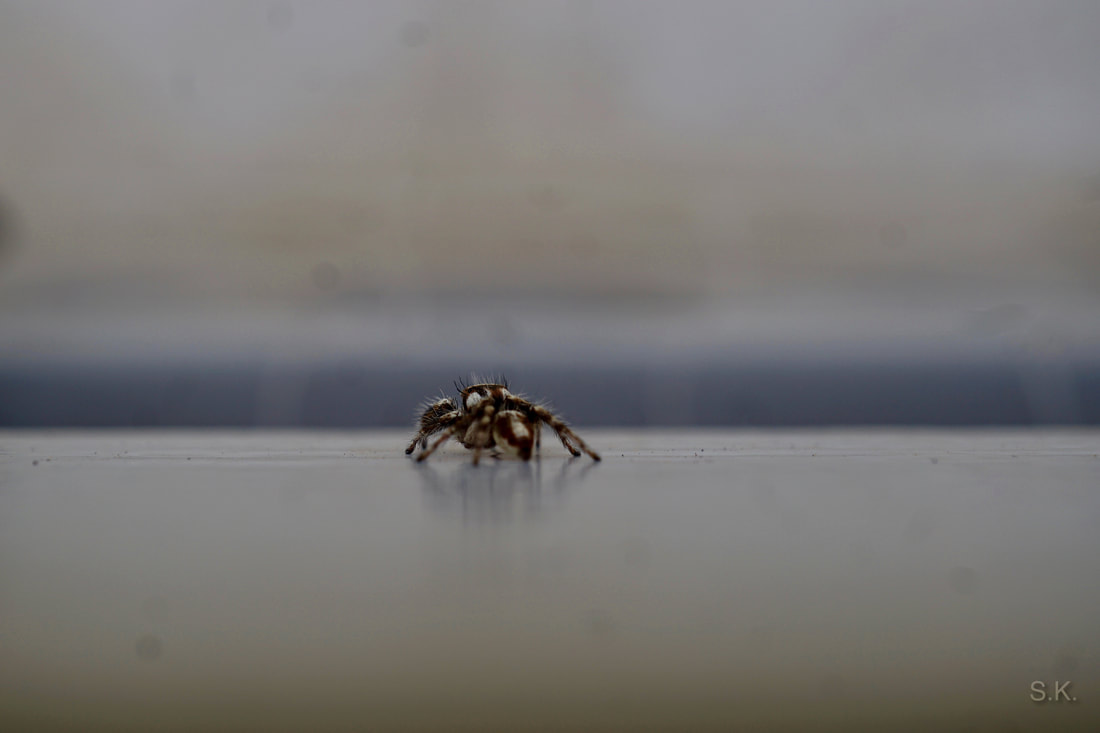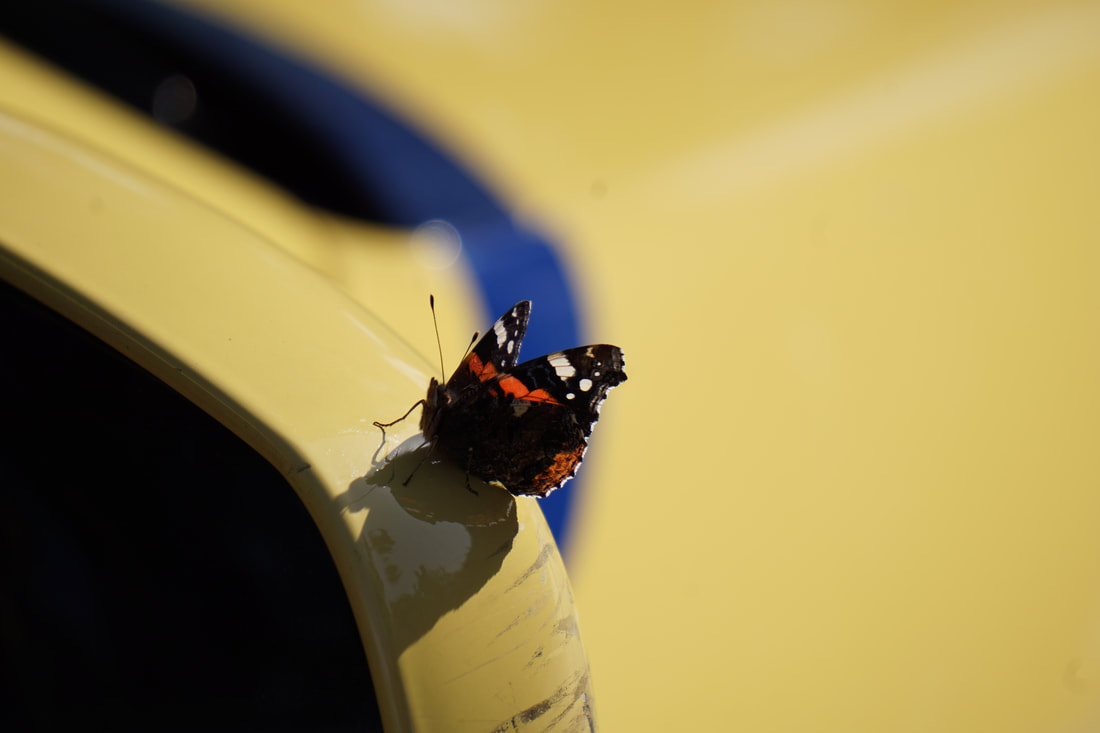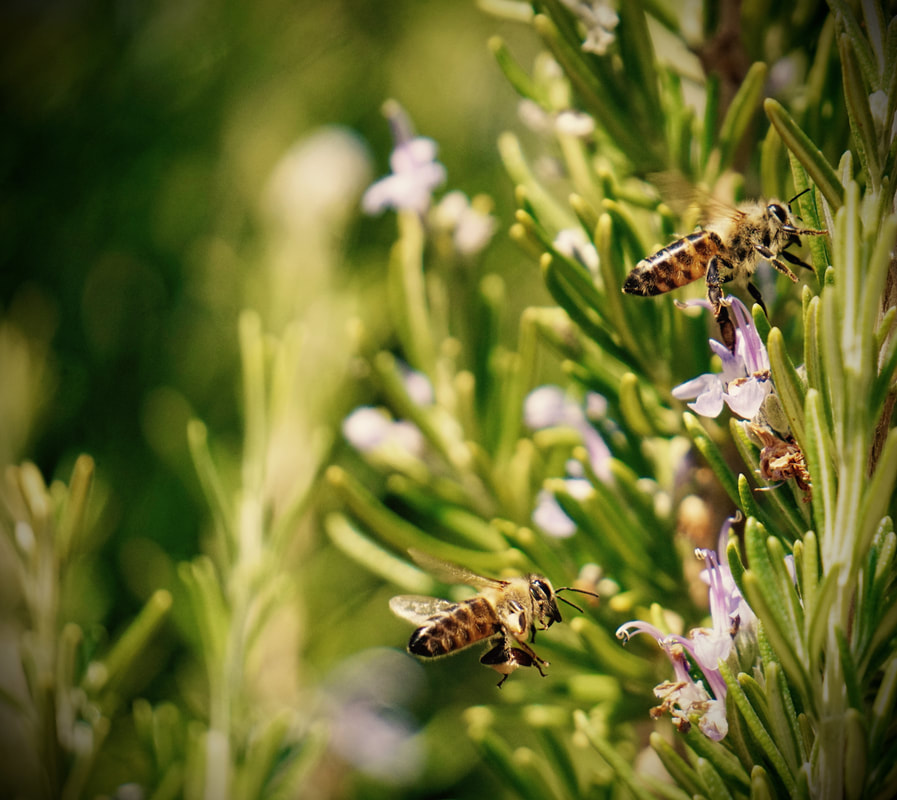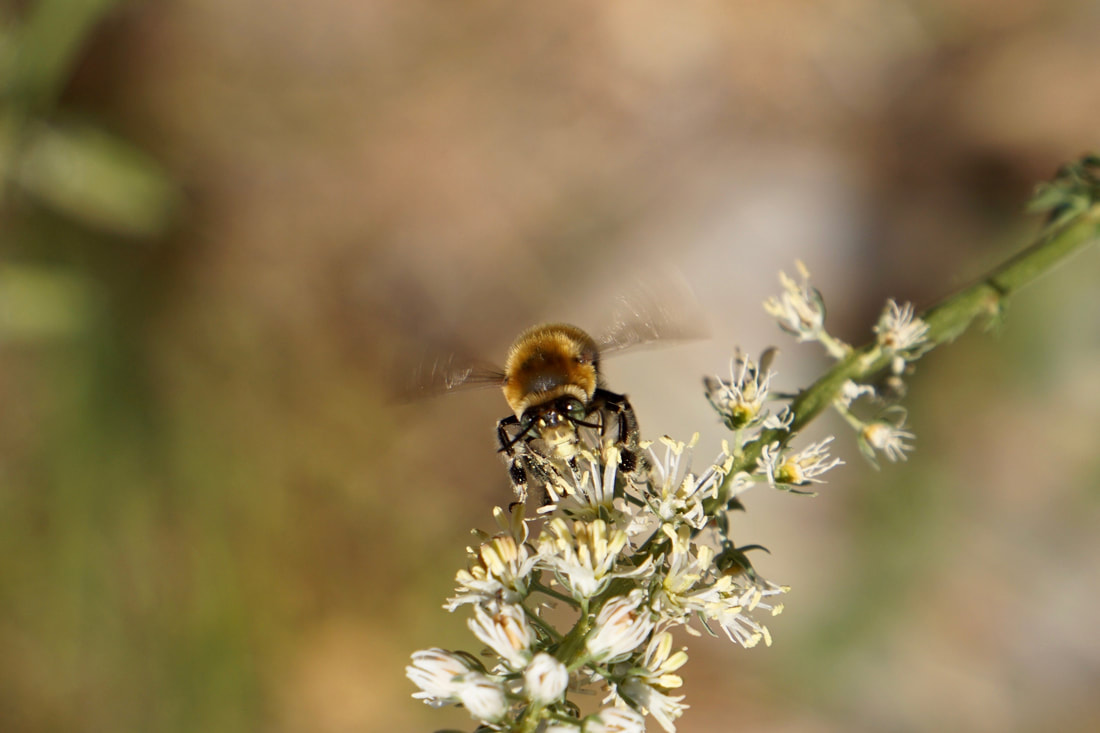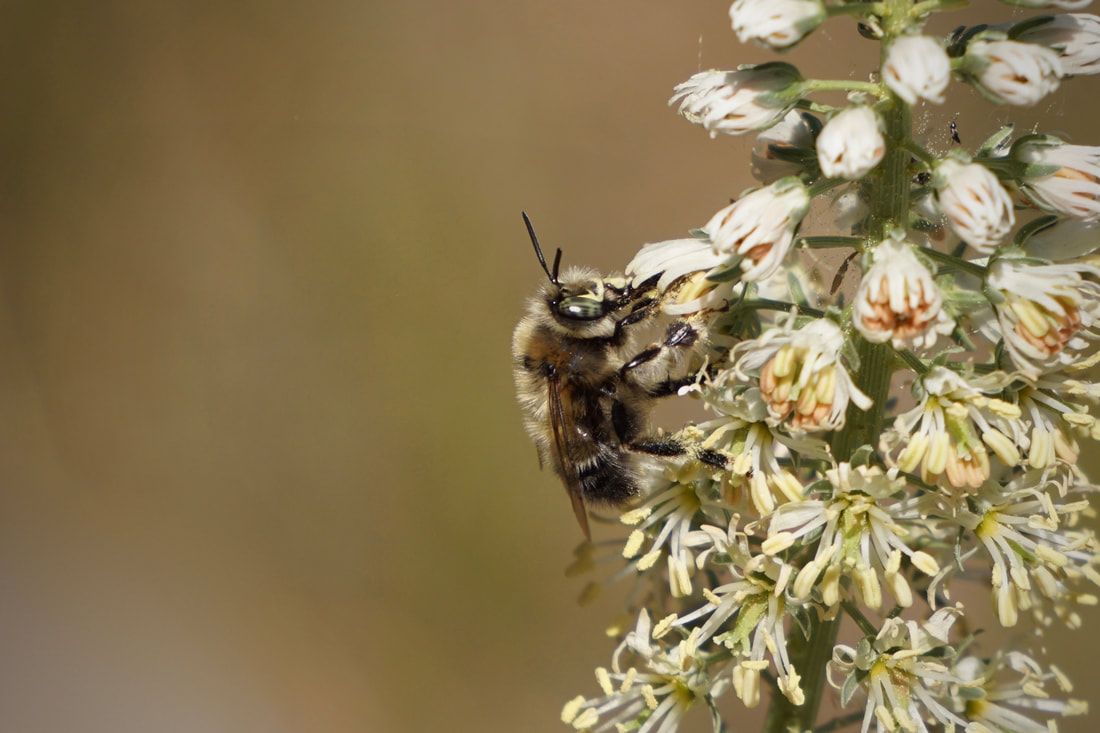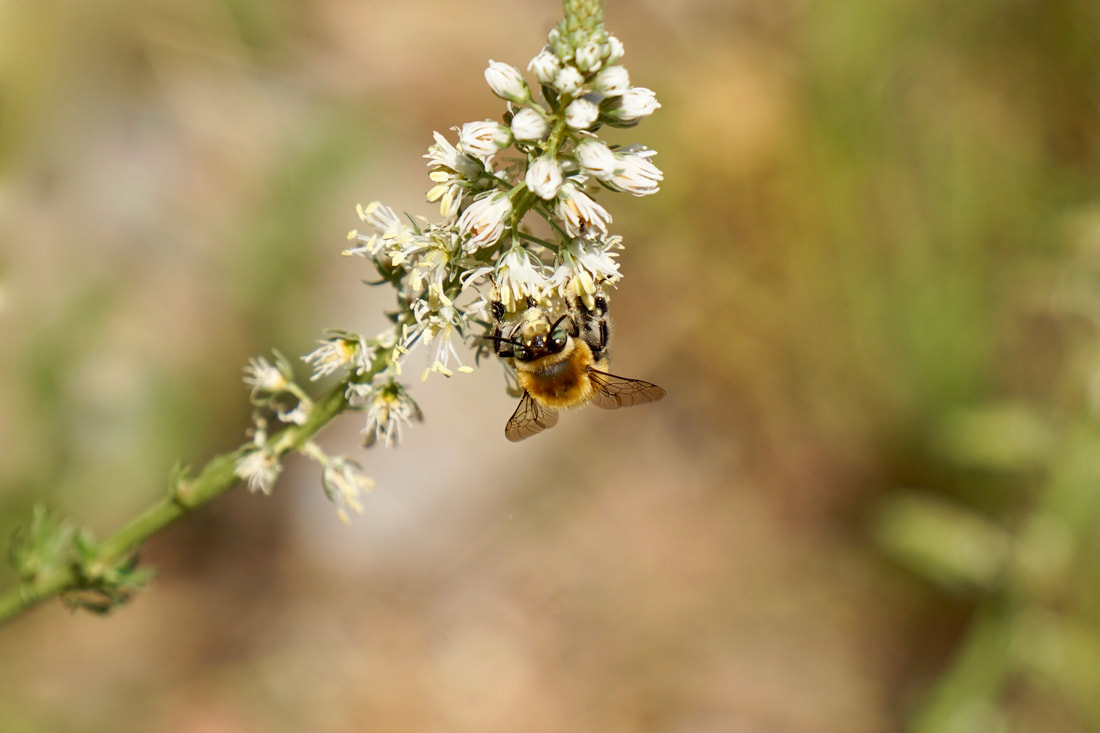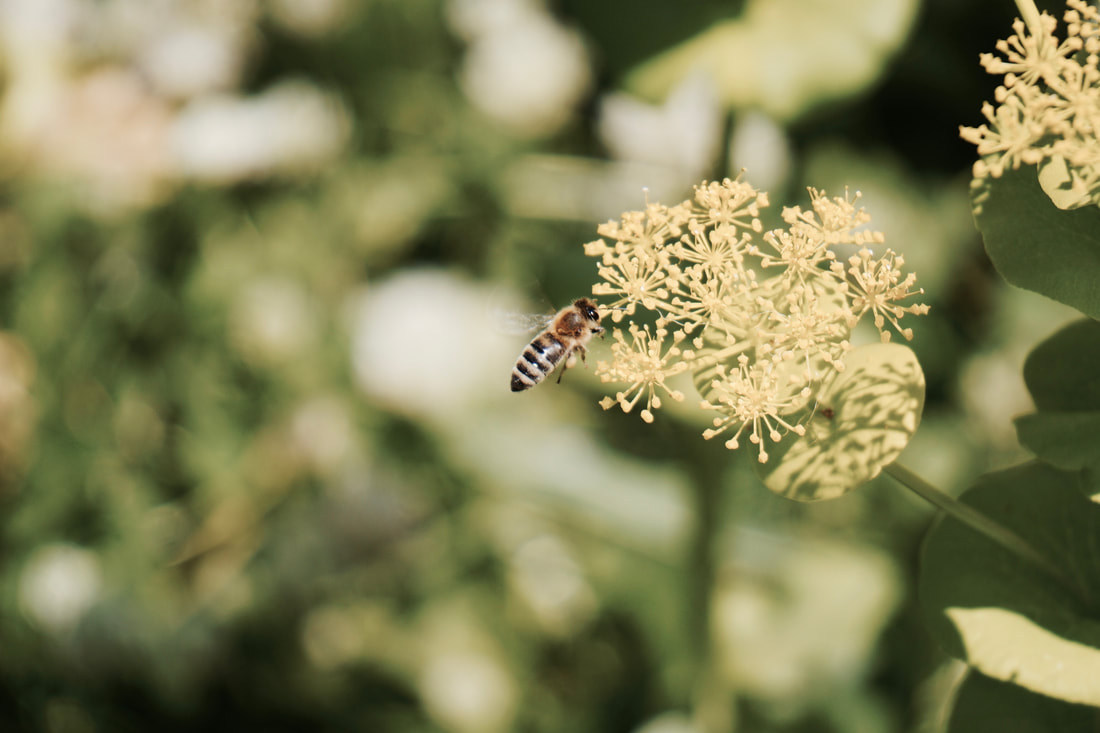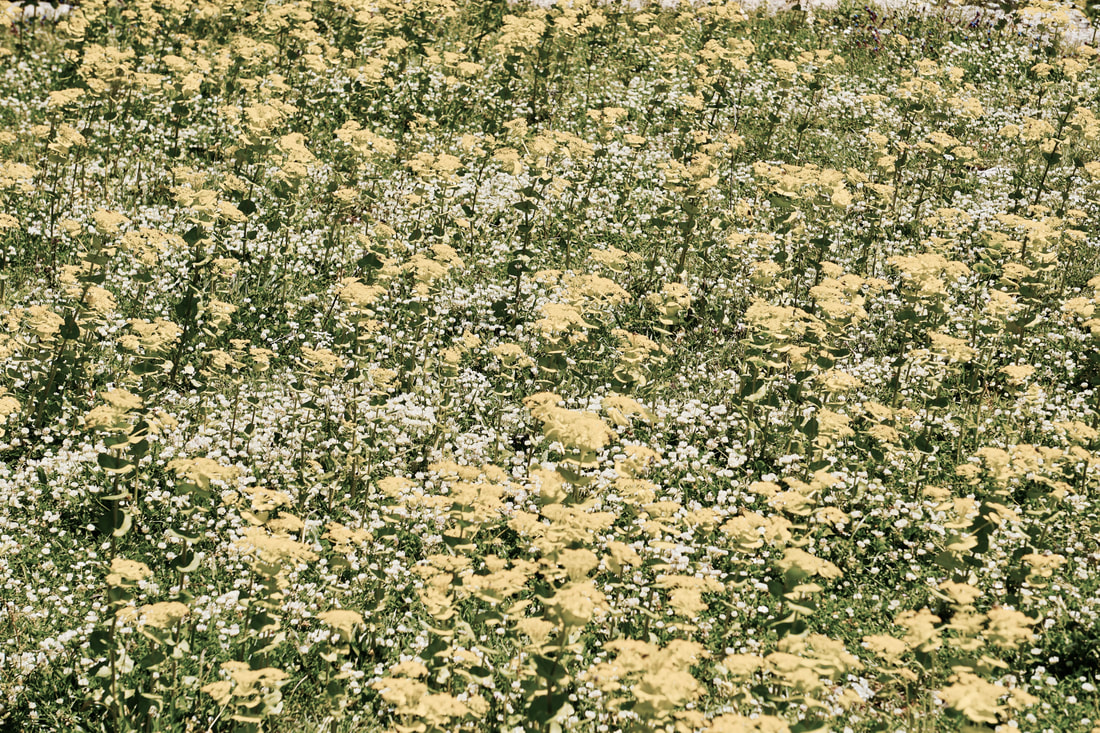|
A photo journey into pollination
|
|
Plants cannot move. In order to attain genetic diversity, they have found ingenious ways to motivate animals to help them, luring them in with magnificent colours and sweet aromas, and offering them nectar and pollen as a reward. This "sex by proxy" process is called (animal) pollination and it involves incredibly hard work, day after day, by millions of tiny organisms, tasked by plants with transferring pollen from one flower to another. We will often notice this process -background buzzing on a spring day- but we rarely truly observe it. Viewing the flower from the insect's perspective, and vice versa, reveals the beauty, balance, and fragility of pollination, which I hope have all been captured in this photographic journey.
Butterflies, beetles, and many other insects and even animals all contribute to pollination, but the master of the art is the bee. It alone serves as pollinator for a critical, nutrient-rich part of the human diet. Several species of bees are now at grave risk for a variety of reasons, directly or indirectly related to human activity. Without bees, a number of food pyramids, including our own, would be adversely affected, and ecosystems around the world disrupted. Protecting bees and other pollinators is a defence of our way of life, and of life on this planet in general.
Butterflies, beetles, and many other insects and even animals all contribute to pollination, but the master of the art is the bee. It alone serves as pollinator for a critical, nutrient-rich part of the human diet. Several species of bees are now at grave risk for a variety of reasons, directly or indirectly related to human activity. Without bees, a number of food pyramids, including our own, would be adversely affected, and ecosystems around the world disrupted. Protecting bees and other pollinators is a defence of our way of life, and of life on this planet in general.
A majority of flowering plants depend on insects, birds, and other animals to transport their pollen in return for food: as the animal lands on the flower to sip its nectar, it gets peppered with pollen which it then inadvertently deposits on the next flower it visits. Other plants rely on wind and splashing raindrops rather than insects to ferry pollen. Wind pollination involves pollen that is lighter and dusty, whereas insects usually ferry larger, sticky pollen. The obvious lack of precision in wind pollination is traded off against not having to expend energy in the production of sweet nectar and colourful flowers.
Over 200,000 invertebrate species, such as butterflies, beetles, moths, mosquitoes, and bees, are estimated to serve globally as pollinators, and make up a significant portion of total animal diversity. Bees alone account for more than 20,000 different species.
Source: http://www.pollinator.org/Resources/facts.Primer.pdf
Source: http://www.pollinator.org/Resources/facts.Primer.pdf
Current evidence suggests that flowers took the major evolutionary step of using insects as pollinators at least 100 million years ago. Genetic studies and insect fossils demonstrate that bees evolved out of a species of wasp around 130 million years ago, and by 80 million years ago they had already abandoned the wasp's solitary lifestyle and had evolved into the social species we know.
Sources:
https://www.sciencedaily.com/releases/2012/05/120514153113.htm
https://www.scientificamerican.com/article/the-beguiling-history-of-bees-excerpt/
Sources:
https://www.sciencedaily.com/releases/2012/05/120514153113.htm
https://www.scientificamerican.com/article/the-beguiling-history-of-bees-excerpt/
Bees (insects in the Anthophila clade) have an anatomy perfectly suited to pollination: their bodies are covered with short hair (bristles) that traps sticky pollen. Some species, such as honeybees (Apis), also carry pollen back to their hives, where they stockpile it for food. They do this using a special formation on their hind legs known as a pollen basket. Bees are abundant in the wild, but have been also raised commercially to pollinate crops for human consumption.
Crops vary in their dependence on insects, with some staple foods, such as rice and wheat, being wind-pollinated instead. However, edible fruits and nuts are largely insect-dependent. In total, one third of all foods, beverages and plant-derived health products benefit from pollinators in production and quality, whereas 5-8% are entirely dependent on them. Consider a summer fruit salad: watermelon, apple, kiwi, apricot and peach are all either essentially or greatly reliant on insect pollination, as is a topping of nuts, with macadamia and Brazil nuts being fully insect-dependent.
Sources:
http://promotepollinators.org
http://www.ipbes.net/
Sources:
http://promotepollinators.org
http://www.ipbes.net/
Each seed in a fruit is fertilised by a separate grain of pollen. So, for example, a cucumber with 300 seeds needs a lot more grains of pollen than an orange. In watermelon, up to 1,000 grains of pollen need to be deposited on each flower. Without pollination of any kind, most plants will flower but will not produce any fruit or seeds. There are some exceptions of seedless commercial plants, notably bananas which are grown from pieces cut off a mother plant, but the lack of genetic diversity makes them particularly vulnerable to disease. Wild bananas are bat-pollinated, but not edible.
Another way in which bees benefit human diet is via the production of honey. Depending on the plant species available to the hive for nectar, the honey will vary in taste, colour, texture and nutritional characteristics. For example, wildflower, lavender and rosemary honeys are all sweeter and more aromatic than forest honey. The latter is often produced from pine, cedar or fir trees' honeydew, which is lower in sugar but richer in minerals. Two million flowers must be visited by a bee hive in order to produce one pound of honey. Bees and their larvae feed on honey, but store any excess produce in honeycombs, which humans harvest. There is some evidence that honey has a number of medicinal properties, including antibiotic, anti-fungal, anti-inflammatory and wound-healing properties. Preliminary studies on Manuka and Chestnut honeys in particular have shown better-than-placebo medicinal effects in clinical trials.
Sources:
Anti-oxidative and gastroprotective activities of anti-inflammatory formulations derived from chestnut honey in rats. Nutrition Research, 26:3, 2006
Clinical usage of honey as a wound dressing: An update. Journal of Wound Care, 13(9), 353-356.
Sources:
Anti-oxidative and gastroprotective activities of anti-inflammatory formulations derived from chestnut honey in rats. Nutrition Research, 26:3, 2006
Clinical usage of honey as a wound dressing: An update. Journal of Wound Care, 13(9), 353-356.
Bumblebees of the genus Bombus are the most effective of all pollinators, visiting twice as many flowers per minute as honeybees. They are also larger and hairier than honeybees, and can hence make longer foraging trips, carry heavier loads, and withstand winds and drizzle. Bumblebees tend to exhibit what is known as flower constancy: they will visit the same bloom every day as long as nectar is available. In recent years, bumble bees have also been reared commercially (like honeybees) to pollinate greenhouse crops, like tomatoes and eggplant.
Some species of bees, like bumble bees and certain species of solitary bees including Anthophorini, tend to hover while sipping nectar, whereas others prefer to land. Hovering requires an insect to beat their wings an extraordinary 230 times a second. Some species can even pollinate flowers by buzzing, which knocks pollen loose from the anthers to the stigma. This is called buzz pollination or sonication.
Many pollinators feature a long nectar-sipping appendage called a proboscis, typically folded under their heads during flight. It is extended by reflex upon stimulation of their antennae by sweet odours. Trumpet-like flowers, such as grape hyacinths (shown here), take advantage of this feature by concealing the nectar deep within their blossoms, deterring animals that do not possess a proboscis of the right shape. The match between plant and pollinator has in some extreme cases evolved to be exclusive. While this may be efficient, it can be dangerous for both partners should one or the other become extinct.
A flower can be male, female or both. In all cases, the reproductive parts of the plant are in the centre of the flower. Pollen, the plant’s male sex cells, is produced by the male reproductive part which is called the anther, and must be transferred to the female part known as stigma of the same or another flower. After it reaches the stigma, the pollen grain grows a tiny tube down the stalk that connects the stigma to the flower's ovary. Eventually, the pollen and the egg form a seed.
Poppies are an example of a self-fertile plant: pollen from a flower's anthers can fertilise its own stigma, or the stigma of a neighbouring flower from that same plant, and does not need to be transferred to a separate plant as is the case in cross-pollination. Given the short distance to be travelled, all it can take for self-pollination to occur is a wind gust. Still, bees are attracted to poppies thanks to their bright red colour and sweet scent. This achieves a mix of wind and insect pollination, as well as self and cross pollination!
A study conducted by Sussex University found that lavender ranks among the top three summer flowering plants preferred by bees. Several factors make lavender appealing: its violet colour, its intense aroma and its tendency to produce large blooms of flowers.
Source:
https://www.theguardian.com/environment/2013/oct/17/bees-most-attracted-lavender-marjoram
Source:
https://www.theguardian.com/environment/2013/oct/17/bees-most-attracted-lavender-marjoram
Bees are attracted to bright-coloured flowers, such as the Aster flowers in these pictures, as well as blue and violet colours. Aster flowers have also evolved a bee-friendly petal shape, which serves as a small landing pad for the bee to rest while it's feeding. Flowers with yellow discs are bee favourites, as they contain more pollen.
Butterflies and moths are important pollinators. Most butterflies need a place to land on the flowers that they visit, so they prefer larger, broader flowers. They have a particularly long proboscis which allows them to sip nectar from tubular flowers. Shown here is a Vanessa cardui butterfly commonly referred to as Painted Lady. Here, it is shown feasting on a flower from a thistle plant, which it also feeds on as a caterpillar. Like many other butterflies it boasts impressive coloured patterns on its wings. One reason for this is mate attraction: its wings will stand out strikingly against flower beds and meadows.
The Scarce Swallowtail butterfly shown here, despite its name, has been historically common in the Mediterranean region. Recently, however, its population has declined. All butterflies of this family (Papilionidae) feature distinctive forked hindwings, resembling swallow tails. Many swallowtail butterflies feed on toxic plants during their caterpillar stage, which renders them poisonous as adults. As is typical in nature, they advertise their toxicity via high-visibility patterns - yet another factor contributing to their impressive appearance.
The Cabbage White butterfly (Pieris rapae) shown here feeds on cruciferous plants, such as cabbage, during its caterpillar stage. Its appetite is so voracious that it can damage crops, but a healthy ecosystem containing its natural predators, such as birds and even ladybugs, can maintain balance. It prefers to visit purple, blue and yellow flowers.
Carpenter bees (of the genus Xylocopa) are important pollinators of flowers with various forms of lids, such as the Salvia species and some members of the Fabaceae family, including the Judas tree shown here. Carpenter bees do not form hives but nest alone or with their immediate family, in hard plant material such as dead wood, hence their name.
|
Hummingbird moths deserve their name: they fly and move just like hummingbirds - they even sound like them, due to the hum produced by their rapidly beating wings. They can remain suspended in the air in front of a flower while they extend their long probosces to sip nectar. Moth pollinators are frequently nocturnal, and will often tend to land on the flowers they visit. In contrast, the hummingbird moth is of the day-flying, hovering variety.
|
Beetles also contribute to pollination, but their voracious appetite places an additional burden on the plant. Plants that are able to produce ample amounts of pollen, and protect their reproductive organs from the beetle's bites will still, on balance, benefit from beetles visiting their flowers.
Source:
http://www.ecpa.eu
Source:
http://www.ecpa.eu
Spiders sometimes have a complex relationship with pollination. Some of them tend to hide inside flowers while hunting for insects. In doing so, they can transfer pollen, but simultaneously they act as a deterrent towards insects who are generally more effective pollinators. The net effect is hard to predict.Source:
http://www.beebristol.org/pollinators/
http://www.beebristol.org/pollinators/
An alarming number of species of both wild and managed pollinators are in decline: indicatively, 77 bee species have been listed as threatened in Europe. The problem might be far worse, however, with over half of all bee species in Europe remaining unassessed due to lack of data. Similar disruptions of pollinator systems are reported worldwide. Wild pollinators are threatened by human activity at multiple levels. A well known disruptor has been the toxic effect of pesticides and some fertilisers. However, equally detrimental is the appropriation of the foraging and nesting sites of pollinators for human purposes, such as urban development and intensive agriculture, leading to habitat loss and fragmentation. Climate change and environmental pollution also contribute to the problem, by modifying or degrading natural habitats. The picture here serves as a visual reminder, depicting a butterfly seemingly confusing the distinctive yellow colour of Athens taxis for that of a bright flower. The problem is not limited to wild pollinators. Managed bees are affected by diseases and pathogens that can spread faster because of practices such as mass breeding and large-distance hive transportation, which are common in the U.S. Diseases will then sometimes spread to nearby wild colonies.
Source:
http://ec.europa.eu/environment/nature/conservation/species/redlist/downloads/European_bees.pdf
Source:
http://ec.europa.eu/environment/nature/conservation/species/redlist/downloads/European_bees.pdf
As urban areas grow, it is essential to preserve green spaces with "bee-friendly" flowering plants, and sources of water. Although this ideally should occur at a municipal level, individuals can contribute significantly by following simple steps in designing their own balconies and gardens. One way to turn your green space into a "pollinator garden" is to allow for native wildflowers and weeds to grow in a meadow area - this can be a wonderful alternative to lawns which have a negative environmental footprint. Native plants and wildflowers are well adapted to the climate and conditions of a country and suit the indigenous wildlife, without upsetting the balance of nature. If you find them visually unappealing, options such as lavender and rosemary (shown in the picture) will still attract plenty of insect pollinators while remaining amenable to being shaped and featuring impressive seasonal blooms and great aromas.
Scientists and international institutions have pressured governments globally to do more to protect pollinators. Success stories include EU regulatory initiatives around the use of insecticides and the protection of wild bee hives, although a lot remains to be done. Right now, pesticide-free agriculture might be unrealistic, but there are many concrete steps that can minimise damage: for example, limiting use, and timing it to protect flowers during their reproductive phase. Alternative agricultural paradigms such as organic methods and mixed crop fields with flower margins also reduce pollinator mortality.
Source:
http://ec.europa.eu/environment/nature/conservation/species/redlist/downloads/European_bees.pdf
Source:
http://ec.europa.eu/environment/nature/conservation/species/redlist/downloads/European_bees.pdf
A picture of a meadow reminds us of the natural state of pollinator systems, teeming with life, and supporting an intricate balance between insect and plant diversity.
To obtain permission to use any of these photographs or other material from this website, please get in touch.
All images and text © 2016-2022 Stella Kontarouda. All rights reserved.
All images and text © 2016-2022 Stella Kontarouda. All rights reserved.
